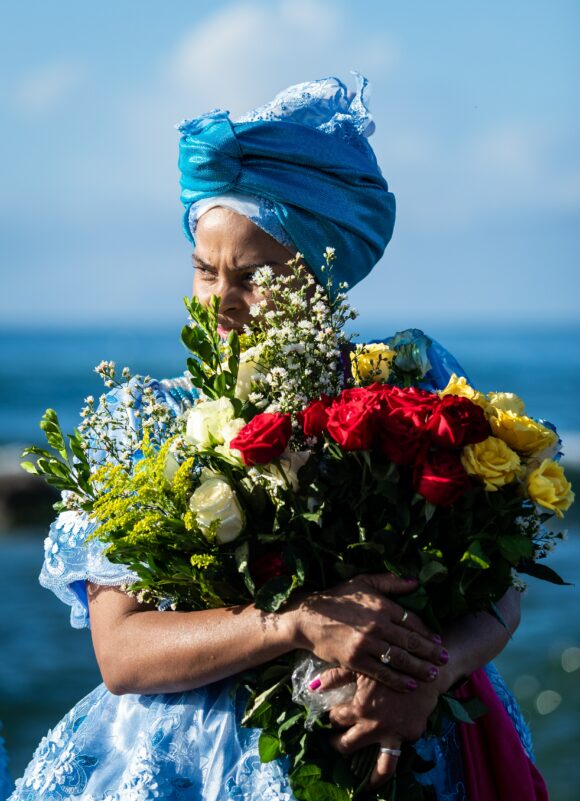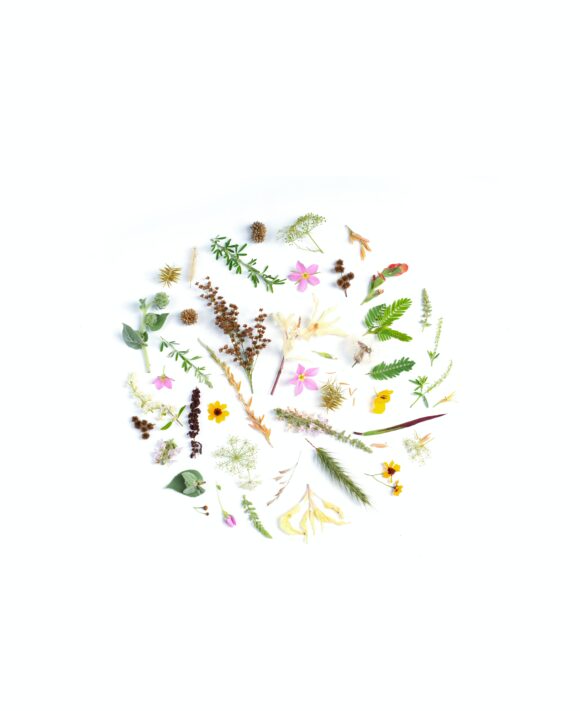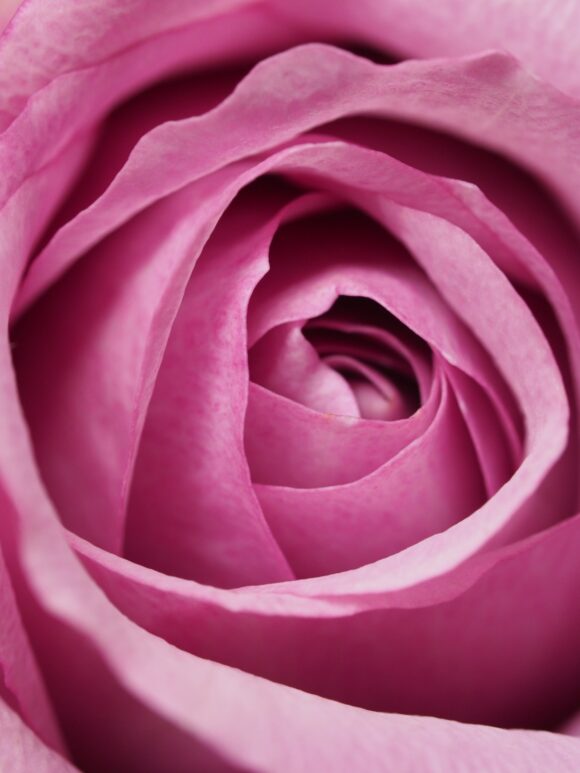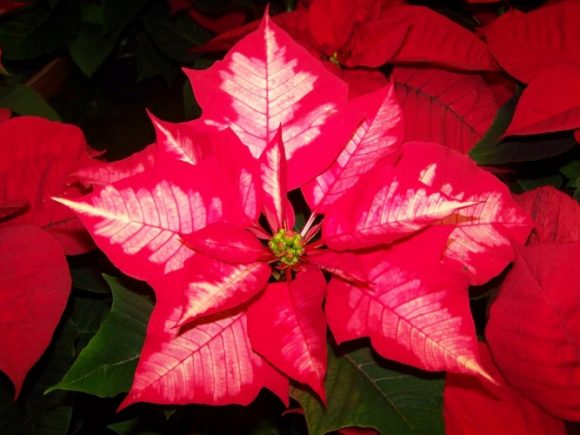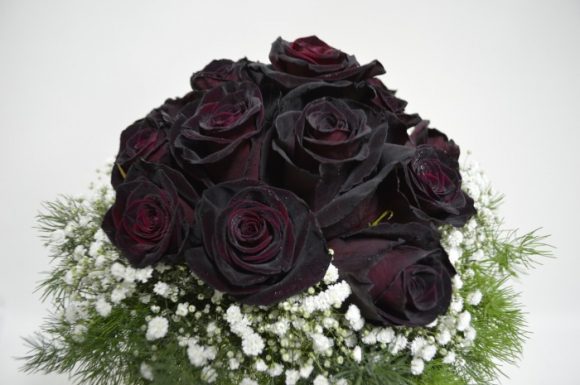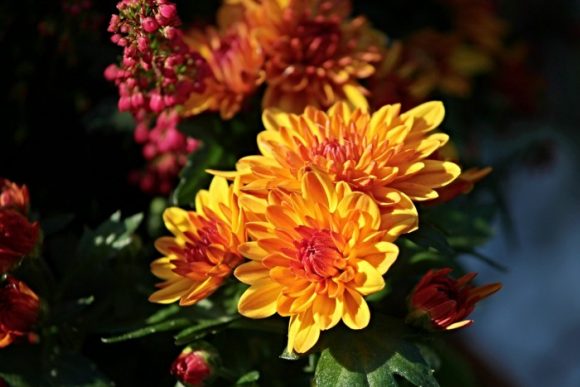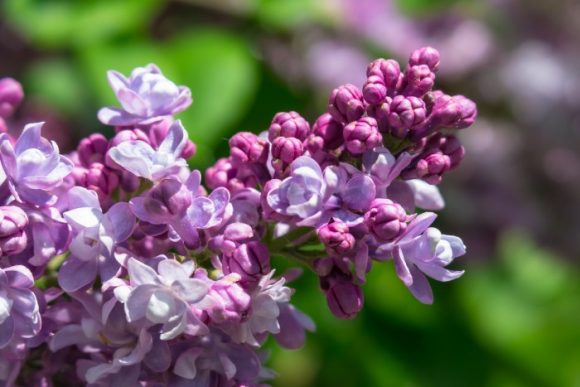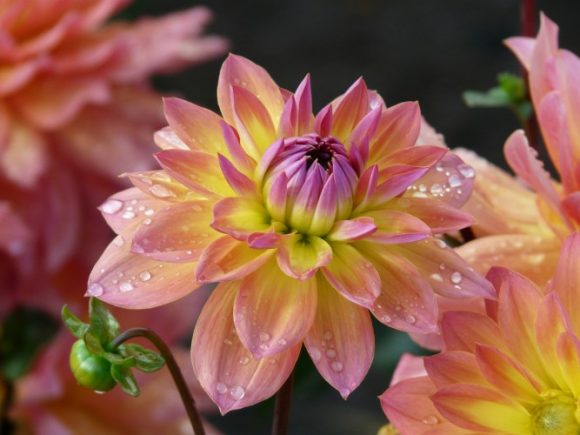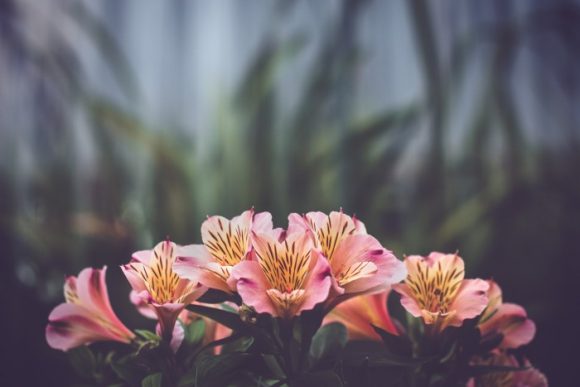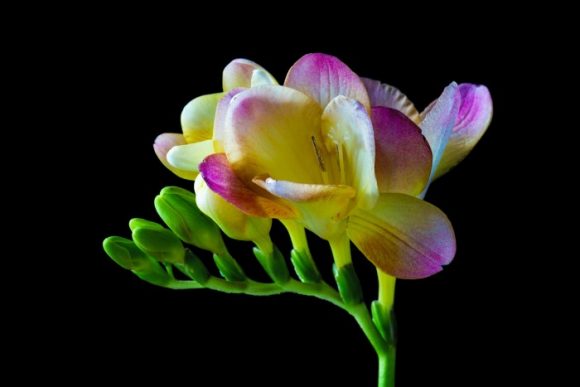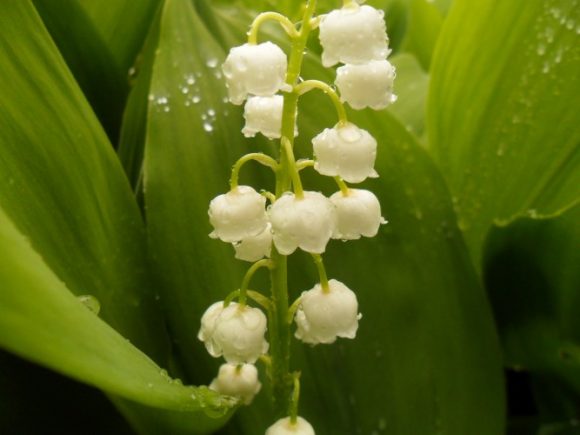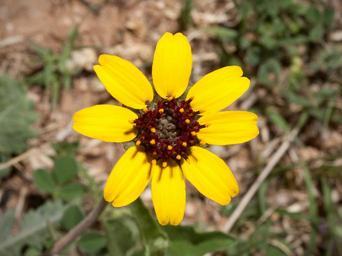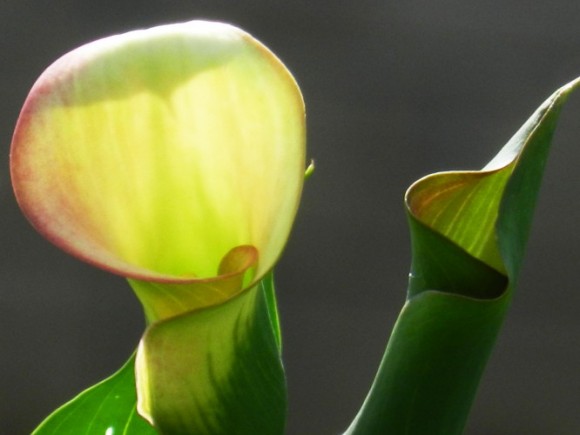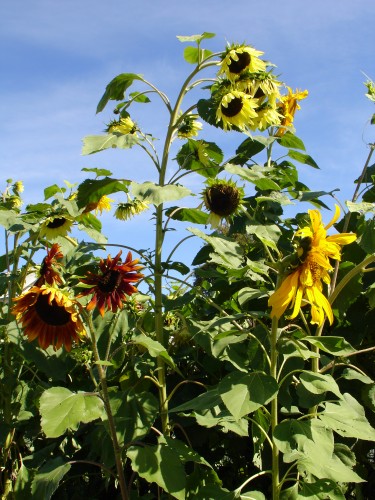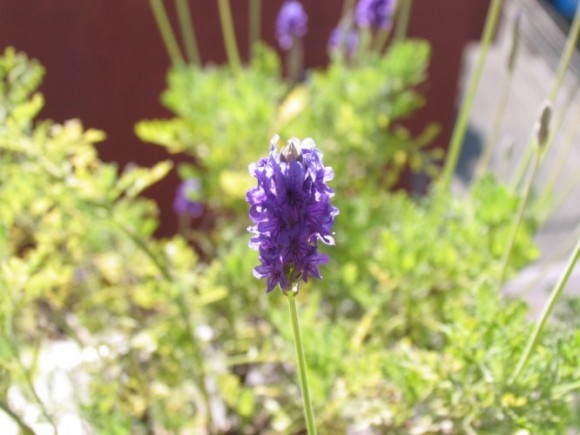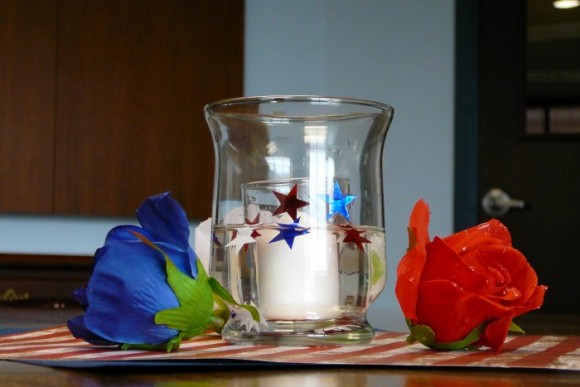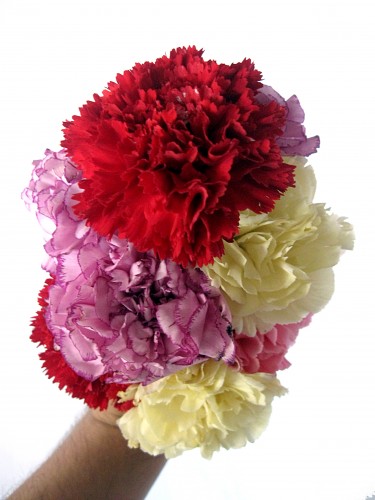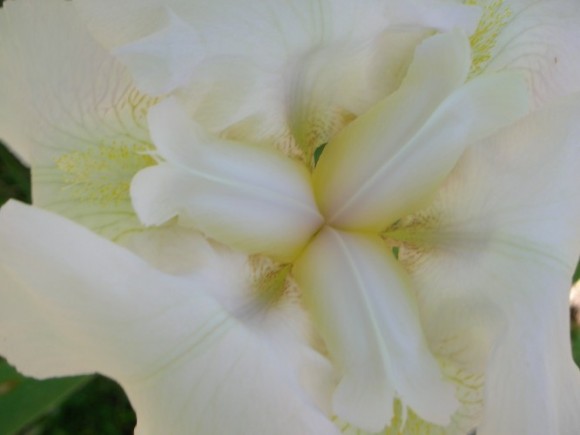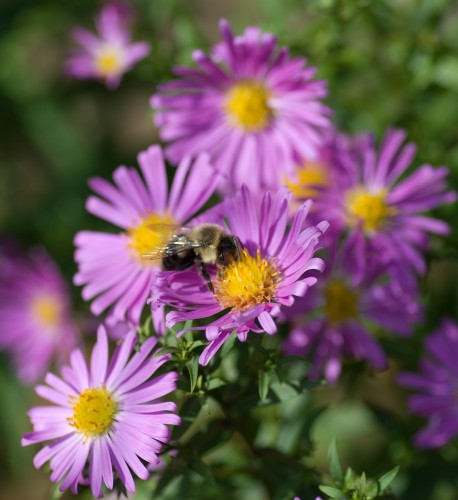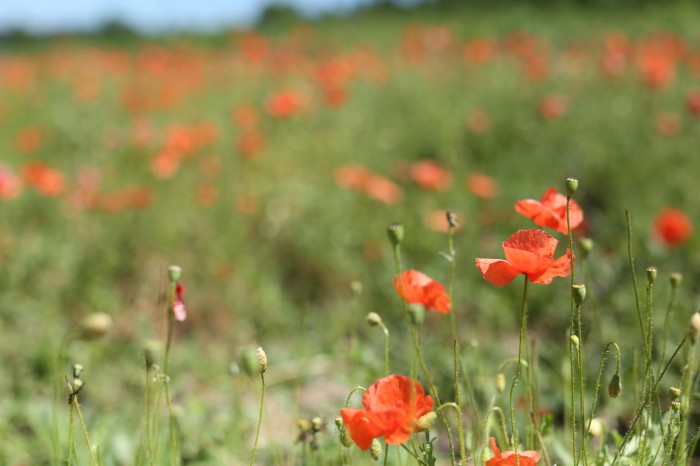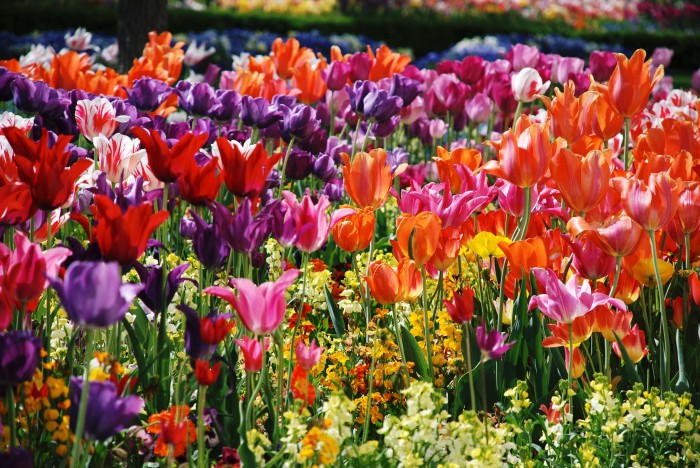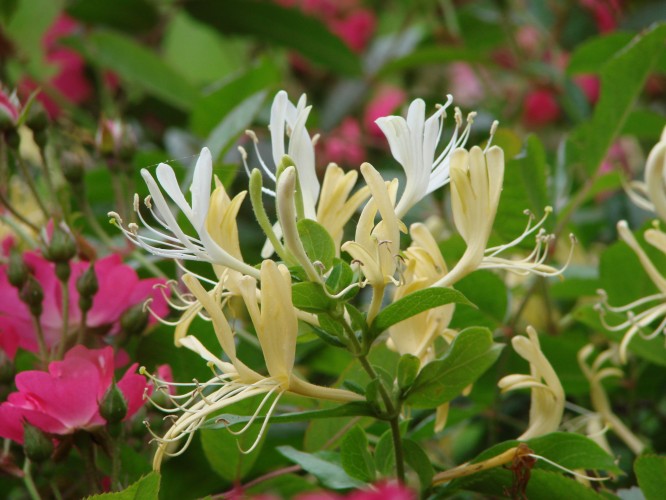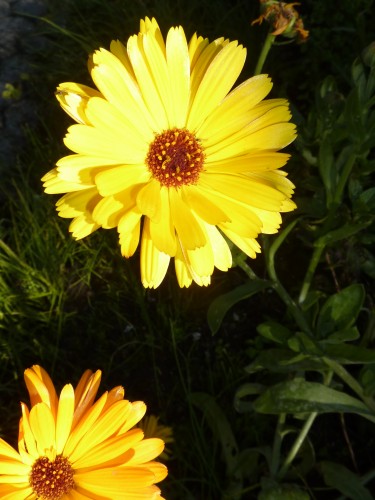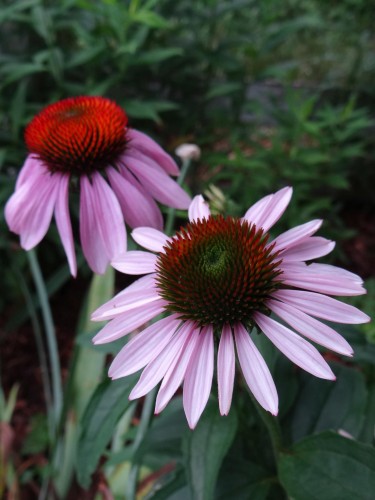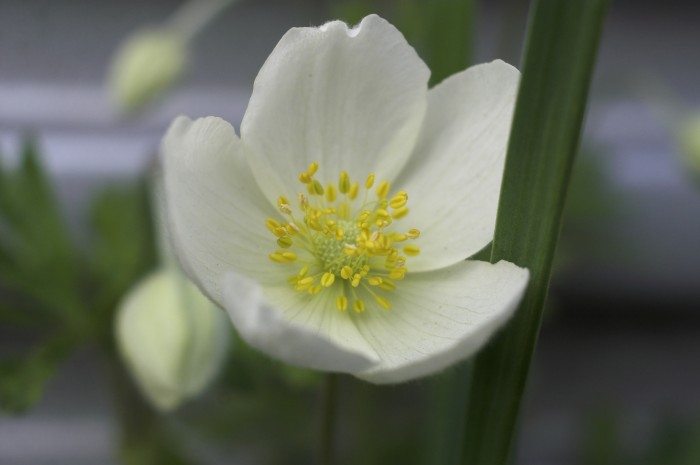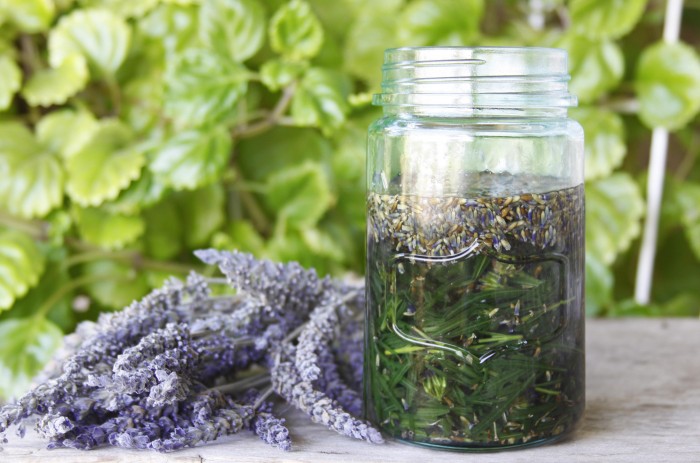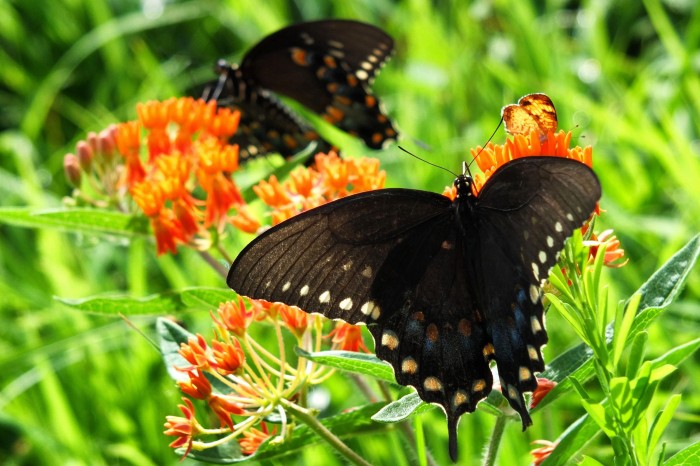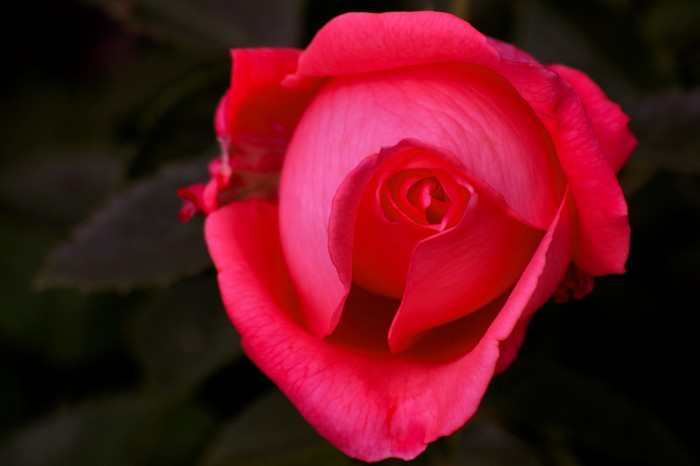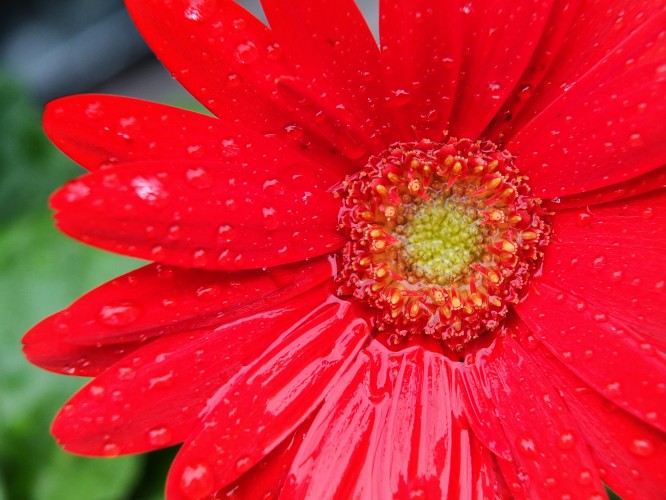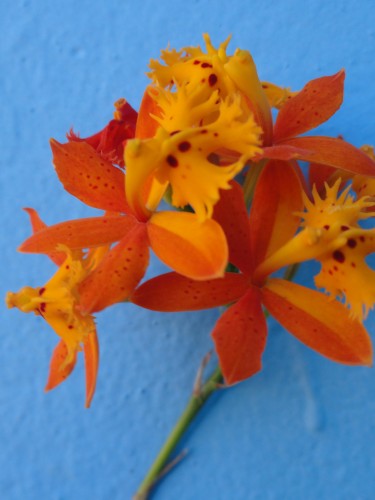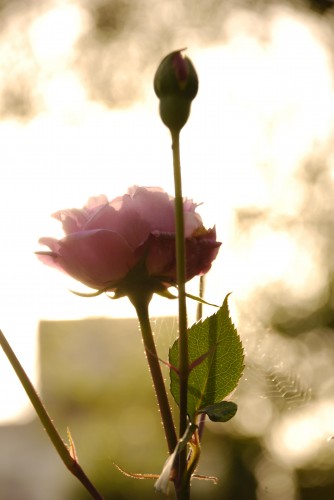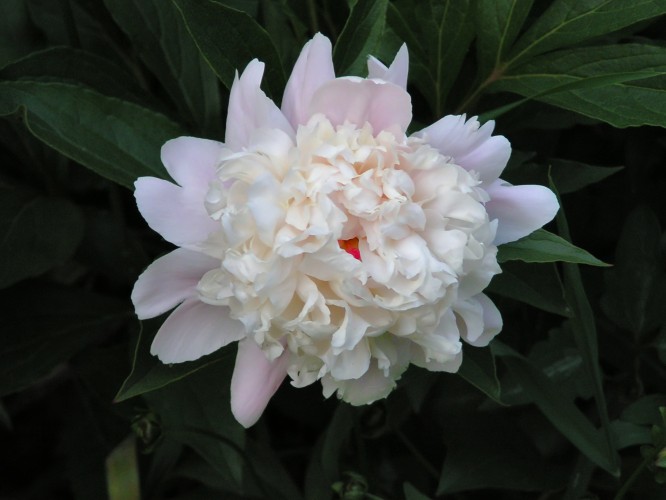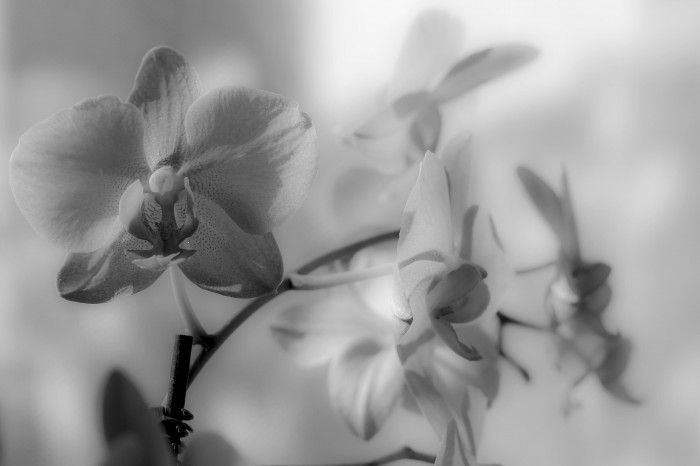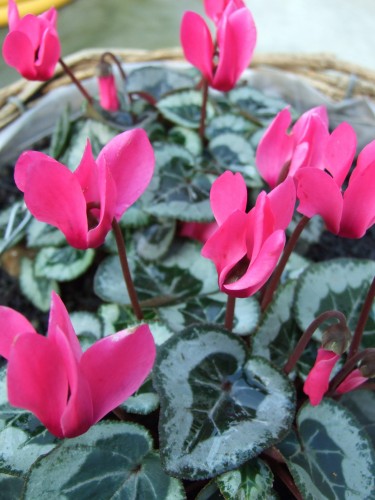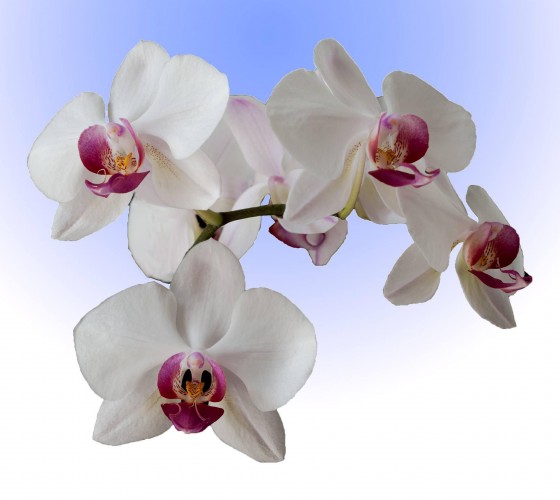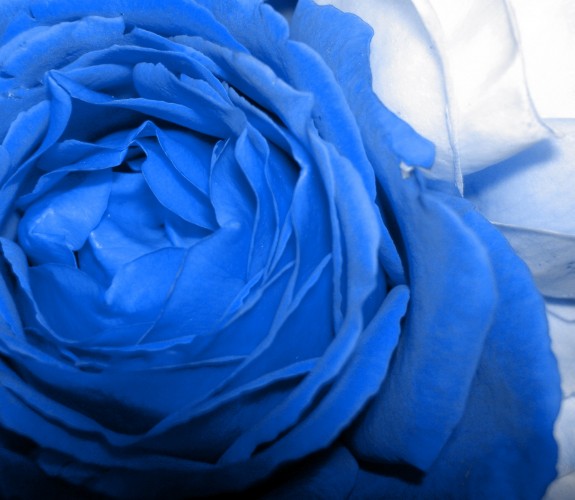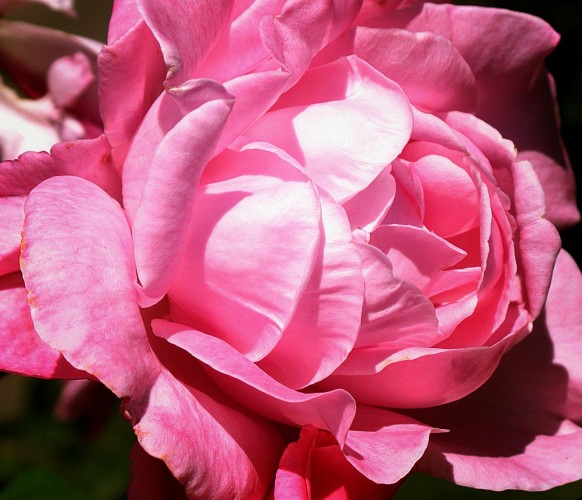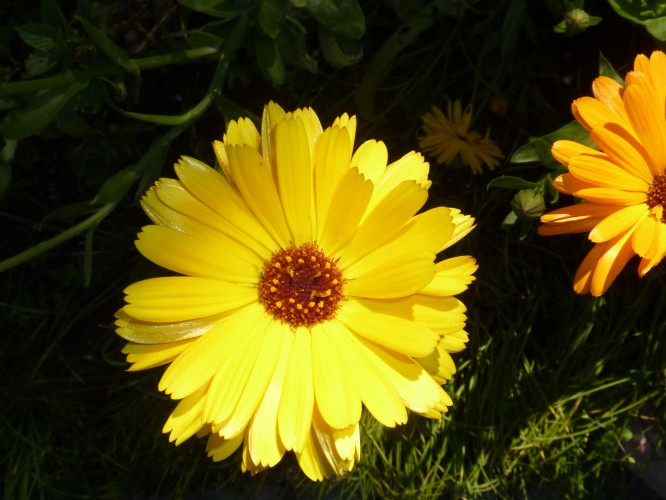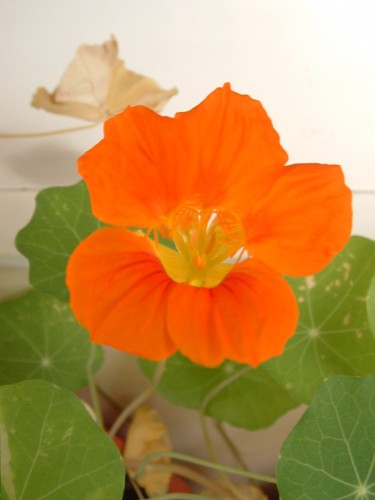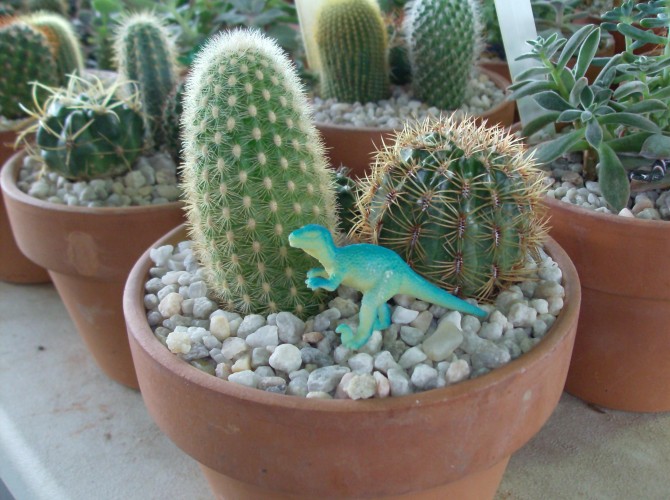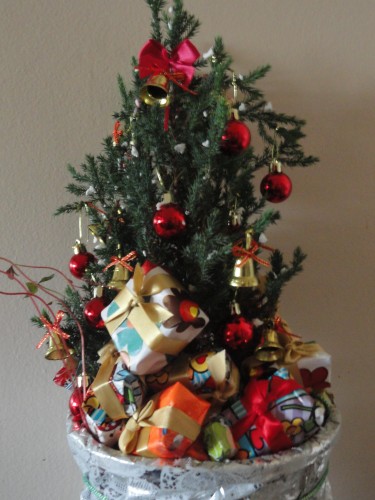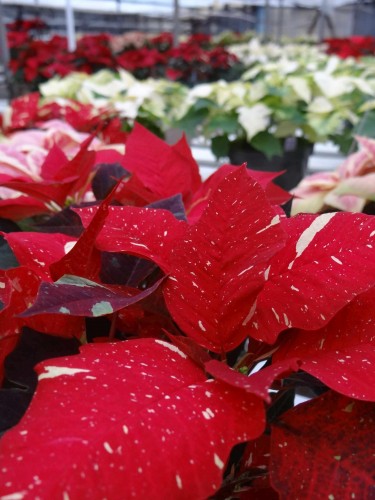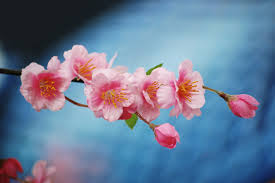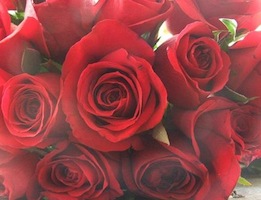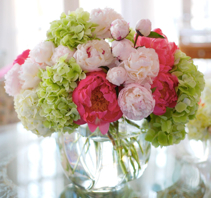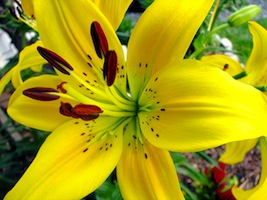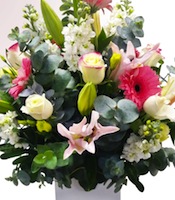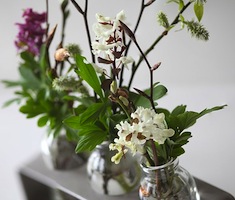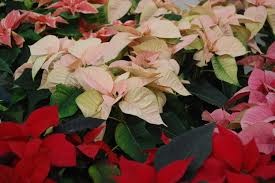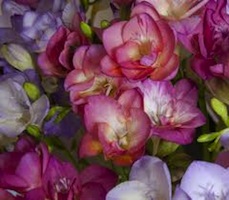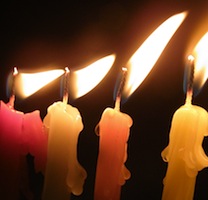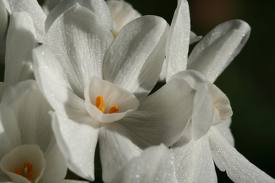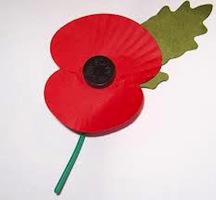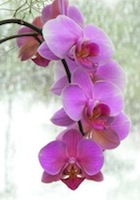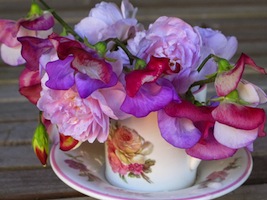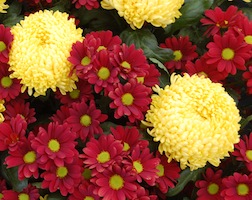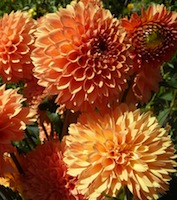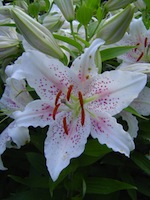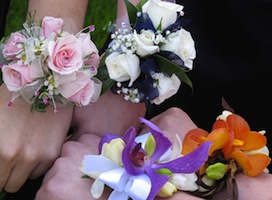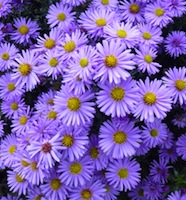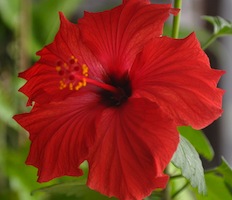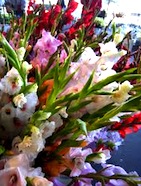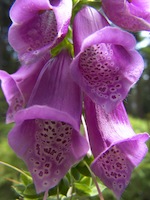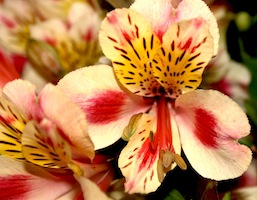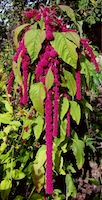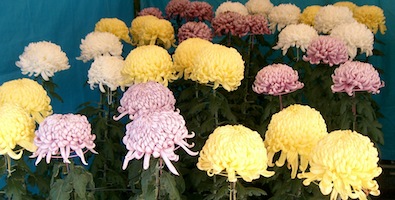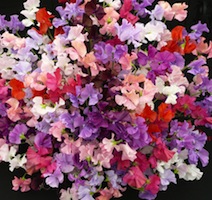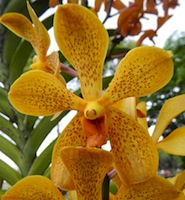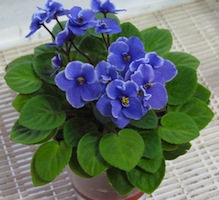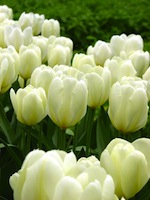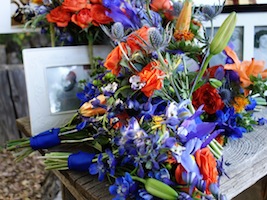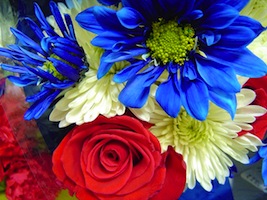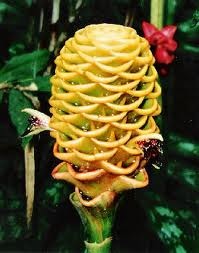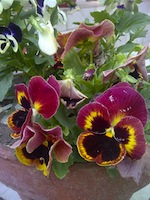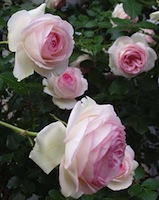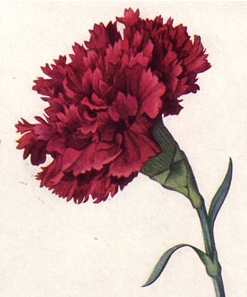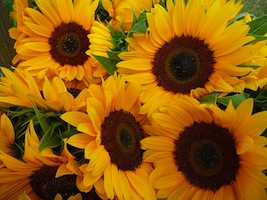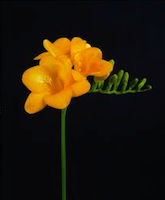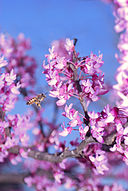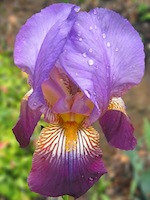Search Results for “”
The Significance of Flowers in Different Cultures
This is just a fraction of the incredible cultures in our world today, all of which their own concept and meaning of flowers. Flowers have held symbolic meanings and cultural significance in many different cultures throughout history. From ancient Greece to modern-day Japan, flowers have played an important role in conveying meaning and representing cultural beliefs and traditions. Whether used in religious ceremonies or as a symbol of good fortune, flowers continue to hold an important place in cultures around the world. Continue reading [...]
The Right Flowers to Welcome a Child
This article outlines the recipe for a bouquet to welcome a child. This applies both to welcoming the gift of a newborn baby as well as any sort of welcoming during their younger years.
In the Victorian era, the language of flowers was an essential means of communicating emotions and sentiments. From declarations of love to expressions of condolences, every flower carried a specific message. In this post, I shall elaborate on how a bouquet of flowers could be used to convey a message and provide an example of a bouquet that conveys a specific message.
The message we shall convey through the bouquet is, "May maternal love protect your early youth in innocence and joy!" Continue reading [...]
The Many Meanings of Roses
In the Victorian era, the language of flowers was used to communicate sentiments and messages that could not be expressed through words alone. Each flower had a specific meaning, and the rose was no exception. In this post, I shall explain the many meanings of roses in the Victorian era language of flowers. Continue reading [...]
Spruce Up Your Holiday Home with Poinsettias
The cheerful poinsettia is a classic Christmas decoration that is beloved around the world. The poinsettia has been associated with Christmas since the 1600s. The plants are indigenous to dry forests in Central America, where legends have long told of a young girl bringing the crimson blooms to a church as a gift for the baby Jesus. Continue reading [...]
Celebrate the Harvest Season with a Floral Cornucopia
The cornucopia is a traditional symbol of a bountiful harvest. This beloved hallmark of the harvest season has long been associated with a plentiful yield. Filled with flowers and produce, the cornucopia proudly displays the best of the year's crops. Continue reading [...]
Spooky Blooms for Halloween
Many of us love to decorate for Halloween. In the United States, Halloween is second only to Christmas for money spent on holiday decor. If you want to incorporate flowers into your creepy adornments, there are lots of festive choices. Continue reading [...]
Welcome Autumn with Chrysanthemums
Hardy chrysanthemums, also called mums, are a beacon of autumn in North America. Blooming in late summer through mid-fall, mums add a pop of color when other garden plants are dying back for the year. Continue reading [...]
Fragrant Lilacs Symbolize Remembrance
The flowering lilac is a bush that seems to be everywhere in the spring in North America. The lilac's early bloom time makes it a welcome sight after a long winter. Its clusters of small blooms and sweet fragrance make it easily recognizable as a symbol of the season of renewal.
Continue reading [...]
Delphinium and Larkspur Send a Message of Heroism
The statuesque delphinium is easily recognizable for its tall spike of five-petaled flowers. One of the birth flowers for July, these flowers are named for the Latin word for dolphin and their history goes back several thousand years. Continue reading [...]
The Many Meanings of Dahlias
As a cut flower or in the garden, the bold dahlia always makes a statement. The dahlia family boasts thousands of hybrids, making it possible to find the perfect flower for someone special. Continue reading [...]
Graceful Orchids are Perfect for Gift-Giving
Orchids have been highly prized since the time of the ancient Romans. Aside from the beauty of the flowers, orchids have several practical uses as well. There are medicinal and culinary applications that have long-standing traditions across the world. Continue reading [...]
The Stately Gladiolus Represents Integrity and Passion
The gladiolus flower is best known for its tall spikes of ruffled blooms. These stems can reach two to four feet in length with blossoms blooming in succession from the bottom up. Gladioli are a member of the Iris family and originated in Africa and the Mediterranean several thousand years ago. Continue reading [...]
Rose Water is an Essential Gift for Rose Lovers
Roses have been cultivated for medicinal, culinary and cosmetic uses for over two thousand years. Steam-distilling methods have been used to extract the essential rose oil throughout most of this time. The by-product of this technique is rose water, a versatile liquid that can be used in culinary, beauty, and even religious applications. Continue reading [...]
A Gift of Irises Sends a Regal Message
Irises are a popular cut flower, often found in mixed arrangements with roses or lilies. They are also quite striking on their own. Dating back several thousand years, the iris flower has long been associated with both royalty and heaven. Continue reading [...]
Alstroemeria is the Right Flower for a Dear Friend
Popular in cut floral arrangements, alstroemeria are small lily-like flowers that are native to South America. They are one of the most common cut flowers in Europe with an increasing following in the United States. Continue reading [...]
Bring on the Dancing Girls: Impatiens Bequaertii
Among the world’s rarest and most enchanting flowers, Impatiens bequaertii is part of the impatiens family but has no acknowledged species name. Most notable for their petals resembling little dancing ladies in skirts, they are commonly referred to as dancing girls. Continue reading [...]
Freesia is the Right Flower to Give to Someone Sweet
Freesia is a popular multi-bloom flower with a distinctive sweet scent. Freesia is available in gentle pastel colors such as white, yellow, pink and lavender. It is among the most popular choices for floral bouquets. Continue reading [...]
Daisies Send a Message of Good Cheer
Daisies, both wild and cultivated, have a rich history of folklore and symbolism. The word daisy comes from the Old English "day's eye" because the petals open at dawn and close at dusk. Continue reading [...]
Lily of the Valley is the Right Flower for Special May Occasions
Lilies of the valley are the traditional flower for the month of May. This tradition began in the 1560s when King Charles IX of France was given a stem of lily of the valley as a May Day gift. The flower has since been said to bring good luck. Continue reading [...]
Sweeten your mornings with this… THE CHOCOLATE SCENTED DAISY
Yes, Virginia, chocolate comes in flowers, too! The chocolate daisy is rich in both scent and names. Known as the chocolate flower, green-eyed lyre leaf, lyreleaf green eyes or just plain green eyes, the chocolate daisy is part of the genus Berlandiera lyrata and family Asteraceae, which also includes asters and sunflowers.
Continue reading [...]
Violets: A Popular Gift Since Ancient Times
Violets have been given as gifts of affection for hundreds of years. There are numerous myths about their creation and their significance as gifts going back at least two thousand years. Continue reading [...]
Daffodils Mean a Gift of Sunshine
Daffodils are considered by many to be an iconic symbol of spring thanks to their brilliant colors and fresh scent. Daffodils mean a gift of sunshine because of their cheerful colors in early spring. Continue reading [...]
Tulips and Their Meanings as Gifts
Tulips are so beautiful that one bulb was once worth one hundred times the annual wage of many of Holland’s residents. At the height of Tulip Mania in the mid-1600s, these highly coveted bulbs were exchanged for large quantities of food and livestock. Continue reading [...]
Top Marigold Beneficial Properties You Should Know About
Marigold, also known as Calendula, is a biennial, aromatic flower native to the Mediterranean, North and South America. Its flowers range from bright yellow-orange to white. Normally, Marigolds have a pungent odor. Continue reading [...]
Edible Marigold: Dinner is Served
Marigold is a common annual flower that blossoms throughout summer and fall. It brings vibrancy and color to many homes and gardens for months. In some instances, it is planted in pots or around other herbs to repel pests. While Marigold flowers are great for ornamental purposes, they have much more to offer apart from their color and vibrancy as they are edible and highly nutritious. Continue reading [...]
Give Easter Lilies This Spring
Easter Lilies (Lilium longiflorum) are beautiful, large and trumpeted-shaped flowers that offer a fantastic fragrance. They’re a stunning spring flower to give and are typically well received with those who love modern and traditional-looking blooms. Continue reading [...]
5 Great Flowers for November
All flowers are beautiful and appropriate for giving anytime. But, certain flowers are standouts for November. They offer a look that's perfect for fall and a sense of warmth to convey just the right message during the holiday season. Continue reading [...]
Flowers for Fall
It’s fall! Time for cozy sweaters, pumpkin spice lattes and fall flowers!
Decorating the house for fall is so much fun. There are many beautiful ways to bring the warmth of fall’s best blossoms into the house or scatter them about a patio.
One of the best things about fall is that the season is perfect for cuddling up indoors around a fire, but also getting out to enjoy the crisp cool air. So, why not decorate indoors and out for fall? Choose some beautiful blooms in shades of yellow, orange, Continue reading [...]
Do You Know About These 3 Unique Sunflower Colors?
The kids are back in school and the weather is getting cooler, which has us looking forward to fall, but not wanting to be there completely until we’ve had our sunflower fill. Sunflowers, of course, can be enjoyed year round, and their warm color certainly makes them perfect to give as an autumn gift. But, we do associate sunflowers with summer and we suspect many others do too. Continue reading [...]
Sunflower Trivia: 5 Things You May Not Know About Sunflowers
Summer, the season of sunflowers. It’s in full swing here in North America and our beloved blossoms are showing up in farmers’ markets and flower shops all over. If you love seeing and celebrating the sunflower as much as we do, you might enjoy a little sunflower trivia. Continue reading [...]
Flowers for Summer: Send Flowers That Purify Indoor Air
During summer, many people spend a great deal of time indoors because it’s too hot to be outside. With the air-conditioning on, you may feel nice and comfortable. But, things could turn around if you’re constantly breathing stale and recycled air. Continue reading [...]
Make These 5 DIY Spa Treatments Using Flowers
Flowers are gifts to us in so many ways. They’re beautiful to look at, they filter our air and they provide nourishment. In addition to using flower recipes to give the inside of our bodies’ nutrients, we can use them topically to heal and soothe.
The following are some ways you can incorporate flowers into DIY spa treatments.
1. Lavender Massage Oil
If you have aches and pains, and even if you don’t, you may like getting a massage from time to time. And, you might love the massage Continue reading [...]
Make Your Own Body Scrub With Flowers
Basic homemade body scrub recipes start with a carrier oil. You can use the oils in the recipes we’ll give you or swap them out with an oil of your choice. Some of the best oils include almond, coconut, apricot and olive. For the scrubbing ingredients, use sugar or salt of you want something that will exfoliate gently and eventually liquefy, which is good because you don’t want large particles of your body scrub clogging up your drain. Finally, pick your favorite flower essences and Continue reading [...]
It’s Almost Time for the Portland Rose Festival
The annual Portland Rose Festival takes place this year from May 26th to June 11th, in Portland, Oregon. The flower-filled event will give tourists and residents the chance to enjoy parades, marathons and, of course, roses like never before. Continue reading [...]
All About the Sunflower: A Perfect Bloom to Give for Summer
What kind of flower is perfect to give for a summer occasion? A bloom that looks like the shining sun and encourages people to be joyful, just like summer can. Continue reading [...]
Flowers for the 4th of July: Party Ideas for Food and Home Decoration
Throwing a 4th of July party this year and need ideas for pretty flowers that you can set out on a table? Looking for flowers that you ca incorporate into your 4th of July food spread? We have some suggestions for you, and of course they focus on patriotic red, white, and blue. Continue reading [...]
The Right Flowers for Summer
How do you choose the right flowers for summer? You opt for any of the following beautiful blooms. Continue reading [...]
The Right Flowers for Graduation
It’s graduation month! What flowers are you going to give the graduate in your life? Will they be fun flowers that will induce a smile? Perhaps formal blooms that will set the stage for a serious future? There are so many flowers that are perfect for giving for a graduation. Consider some of the following when you go to buy your bouquet or arrangement. Continue reading [...]
June Wedding? Popular Flowers for Bouquets and More
It seems like this year has flown by quickly. It’s June already, and it’s time to start thinking about warmer weather in the U.S. - and maybe flowers for those of you who have June weddings coming up. We recently wrote about some flower ideas that are perfect for late-spring nuptials, but since there are so many blooms that can potentially add beauty to a casual or formal wedding, we thought we’d offer more suggestions. Continue reading [...]
Celebrate the Lily This May!
We have about two weeks left of May, which means there are about 14 days remaining to celebrate May flowers. Of course, we love flowers and think that any variety is perfect for enjoying anytime. But, it’s often fun to give flowers – and to keep them in our homes – during a certain month that are associated with that month. Continue reading [...]
About the Dahlia
The dahlia is a flower that we love to grow and give during summertime. Its beautiful shape reminds us of a shining sun and its colors are cheerful and bright, which is perfect when we want something to perk up our garden or our home – or flowers to bring joy to a friend or family member. Continue reading [...]
Asters for Summer
Summer’s coming, which means we get to decorate our homes and gardens with beautiful summer flowers – like the aster! The aster is one of our favorite summer blossoms because it’s cheerful like we feel during summer and it looks like a shining sun. Continue reading [...]
Use Flowers to Make Ice Cream
Bring the beauty of flowers into your kitchen, and the goodness they can provide the body, by making a lovely lavender or rose ice cream on a warm day this spring.
Flowers have a way of lightening the spirit and promoting a cheerful attitude, like ice cream does. So why not combine the two and whip up a treat that has the potential to turn around a bad day or make a good day even better. Make a batch of the following flower-infused frozen deserts for yourself, or your family, and enjoy flowers in yet another delicious way. Continue reading [...]
Places in the United States to View Spring Wildflowers
We’re well into spring, which means there are opportunities all around to view beautiful wildflowers. Landscapes from the east to the west are bursting with color as pretty poppies, daisies, and other gorgeous flowers cover miles of ground and bring beauty to those who are privileged to walk or drive by.
Where are the best places to view these stunning wild blooms? We’ll tell you, and we’ll let you know a bit about each region you can visit in hopes that you’ll be tempted to go and view the grandeur for yourself. Continue reading [...]
About the Easter Lily
Thinking about giving an Easter lily to someone for the holiday? It makes sense to gift this flower, since the white, trumpet-shaped blooms represent purity, newness, and virtue – the same characteristics that come to mind when many think about Easter.
To give you a little background on the Easter lily, so that you can know more about the gift you might be giving and so you can perhaps share some lily tradition with your giftee the following are a few myths, legends, and bits of trivia associated with the flower. Continue reading [...]
The Right Flowers to Add to a Spring Salad
Did you know that you can gather pretty spring flowers and put them into a salad? Not any spring flowers, but those that are of course edible and those that taste incredible.
We love to prepare flowers with salads to bring to Easter potlucks, Mother’s Day brunches, and any special events that are happening during springtime. Usually guests at these gatherings are surprised, and delighted, to find our beautiful salads and to learn that they can eat what looks like mere decoration.
We love sharing the fact that many edible flowers not only provide beauty, they also offer nutrition by way of vitamins and minerals and they give the body powerful doses of antioxidants. Continue reading [...]
Consider the Tulip for Spring
If you’re putting together a spring floral arrangement, or looking to buy a spring bouquet for someone special, consider tulips. Tulips are popular flowers that have come to symbolize spring and the new life that comes along with the season. They’re gorgeous flowers that are available in many colors, and they’re ideal for modern or traditional bouquet and arrangements. Continue reading [...]
Creating a Dramatic Orchid Display
Orchids are great flowers to include in arrangements for a variety of occasions. They can be perfect for bridal showers, weddings, corporate events, and even get-togethers with friends and family because they are versatile in design.
You can use orchids to create casual and earthy arrangements, but we especially love them in formal dramatic displays. The following are some ways that you can incorporate orchids in sophisticated, classy centerpieces or bouquets. Continue reading [...]
Sunflower Fun Facts
It’s easy to see the beauty of the sunflower when you look at it, but some of what makes the flower special remains a mystery to many people. For instance, do you know tall a sunflower can grow or all the ways in which a sunflower can provide for a human? If you do, keep reading because we’re going to give you a more sunflower trivia that might surprise (and delight) you. If you don’t, read on as well, and find the answers to these questions, and others, as you learn about the beautiful sunflower. Continue reading [...]
Rose Trivia
In honor of Valentine’s Day, and because there will likely be many roses sent and received for this special holiday, we thought we’d give you a bit of rose trivia to celebrate.
Roses are universal symbols of love. Most everyone knows that roses represent adoration, desire, friendship, and other forms of love that one person can have for another. But, roses offer more meanings and they come with some interesting stories. The following are some pieces of rose trivia we thought you’d like to know about. Continue reading [...]
Climbing Flowers
If you’re looking for ideas for climbing flowers to decorate a wall, trellis, or other garden feature, you have many beautiful blooms to choose from. We’ve put together a list of some of the most popular, and stunning, climbing flowers that you might want to include in a front yard, back yard, or patio garden. Continue reading [...]
Flowers for Eczema Relief
Did you know that if you suffer with eczema, you can turn to flowers for healing? The following are some flowers that you can use to make soothing ointments, masques, and bath soaks to help relieve the discomfort associated with eczema.
To use these flowers as an ointment, cut them into small pieces and then crush them, then mix them with a pure plant oil like almond oil or coconut oil. Apply your ointment and let it sit on the skin for as long as you can. Just pick the flower petals off when you feel like it. Flower masques are made like ointments and they work pretty much like ointments, but you can use larger flowers in a masque (and lots of them) and leave them plastered to your itchy skin for about 30 minutes. Then, you’ll want to rinse your masque off. Sometimes, soaking in a warm bath with the following flower petals inside can be what’s needed to soothe red and sore skin. Continue reading [...]
More Flowering Herbs for an Herb Garden
We recently told you about some flowering herbs that we like to keep in our home or in our garden. But, later we realized that there were more herbs we wanted to share with you.
Herbs are amazing plants because they offer so much beauty, and benefit, for us. They’re ideal for using in cooking, they provide healing in the form of natural medicine, and they lift our spirits when we think about the beautiful way nature provides for us through them. Continue reading [...]
Creating a Flowering Herb Garden
Two things that we love about spending time in our homes are eating and enjoying the fresh flowers we’ve surrounded ourselves with. We figured out a way to combine both of these delights into one treasure, one that we think you’ll love to have around.
We created a flowering herb garden. We made one that will supply us with beauty for the eyes, and for the palate, for a long time to come.
A flowering herb garden can offer a pretty view when looking out the kitchen window. And, it can offer a delightful scene in a yard or on a patio. Flowering herbs make for tasty ingredients in homemade meals, both sweet and savory ones. They can also be used in healing juices, teas, and elixirs. Continue reading [...]
Flowers that Bloom During January in North America
If you’re trying to put together a seasonal bouquet from flowers that are readily available in North American during January, you’re in luck. We’ve been thinking about flowers and the season, and we thought you might want some suggestions for great January booms. We’ve put together a list of flowers that people living in North America should be able to source with no problems to create a beautiful home, or garden, display during this winter month.
We came up with a collection of flowers that we’re going to try to bring into our houses and yards this month, including flowers that represent the restorative power of winter and those that give us a sneak peak into what spring will offer. Continue reading [...]
Flowers to Make Healing Ointments
Did you know that many flowers can be made into healing ointments? We love to keep flowers like lavender and calendula around because they offer relief for a variety of conditions, such as dry skin, burns, and rashes. In addition to offering a bit of natural medicine for some of our ailments, these flowers (and several others) are quite beautiful to look at, so we make sure we frequently have some in our garden in or a vase indoors.
Continue reading [...]
A Guide to Wildflowers
Even though it’s winter, and we still have our house filled with Christmas trees and holly, we’re thinking about wildflowers. Wildflowers seem to come to mind for us whenever we need a bit of a pick-me-up in spirit or a bit of encouragement of the goodness that's in the world. Lately, as we look back on 2015 and ahead to the new year, we’re thinking about the things that make us most happy so we can bring more of them into our lives.
Flowers make us happy. Especially happy and cheerful-looking flowers like wildflowers, which is probably why they’re floating around in our brain right now.
If you love wildflowers too, we’d like to offer you a gift for the holiday season. Take this guide to wildflowers and start planning the perfect wildflower garden for planting in spring. Or, go out and buy yourself some of these beautiful blooms from your local market or florist and enjoy them now. Continue reading [...]
Flowers that are Safe for Companion Animals
Having companion animals and flowers together in a house can make for a happy life. But, choosing animal friends and flowers that can coexist is essential to bring about all of this happiness.
If you have cats or dogs who live with you, and you want to have a bit of floral beauty in your home, the following is a guide to which flowers you should choose and which should stay at the florist. Continue reading [...]
Flowers to Leave in Your Airbnb Rental
Do you rent out your home on Airbnb? If so, why not leave a beautiful bouquet of flowers for your next houseguest? There are several blooms that can offer a welcoming spirit and a gift of generosity for someone staying in your home. These flowers can be just what’s needed to help a traveler feel comfortable in a new place and to give them a bit of human connection in a city where they might not know anyone.
Continue reading [...]
Celebrate the Rose for New Year’s
In California, and in many other parts of the United States, the thrill of the Tournament of Roses Parade is little more than a week away. In celebration of the annual Rose Parade, we thought we’d feature the rose and talk a bit about why it’s such a beloved bloom.
Just as roses bring beauty to the floats in the Tournament of Roses parade, they can bring loveliness to your home, your hair, or the life of someone special to you. Why are roses such cherished blooms in events like the Tournament of Roses Parade, and when given as gifts (to yourself or a loved one)? We think it’s because roses are the perfect representation of delicateness, strength, adoration, and friendship. Who doesn’t want to see more of these things being shared in the world? We absolutely do, so let’s explore more about the power of the rose. Continue reading [...]
Flowers to Cheer You Up
Have you ever felt down, but been drawn to the beauty of flowers so much that your spirit was lifted? We have. It seems that even in the darkest of times, the delicate appearance of a flower or its sweet fragrance has been all that was needed to perk us up.
We can’t count the number of times we’ve felt blue and then walked past a rose only to be lured in for a sniff. Why? Why do flowers call to us, even when we’re dead sure we’ll never see happier times? Perhaps it’s the symbolism of the flower as something that keeps focus on the good, even when chaos surrounds it. Maybe it is the smell of some, and the way that the fragrance notes affect our brain physically? Continue reading [...]
About the Cheerful Daisy
Do you love daisies? We do. We love them a lot, in fact, and we thought you might too. In fact, we kind of assumed that everyone loves the daisy and the uplifting energy that the flower provides.
When we look at daisies, we can’t help but notice that a huge smile comes across our face. Daisies, in all their forms, bring such happiness and lightness to a day for us. Which are our favorite daisies? It’s hard to narrow a list down to just one. But, we love Gerbera varieties and we go crazy for small common daisies. Both look beautiful in a vase, and they make stunning additions to a garden or a bouquet. Continue reading [...]
The Right Flowers for a Cutting Garden
One of the things that brings us great joy is growing flowers to cut and place inside of our home. We love the way fresh flowers offer joy, beauty, and gratitude to our day. We appreciate having the ability to cut flowers when we want, plop them in a vase or bowl, and instantly receive the good feelings that they provide.
If you adore the idea of having fresh flowers available for your home, whenever you want them, consider planting a cutting garden. There are several blooms you can choose from to give you an endless supply of flowers for stunning bouquets, and even single-vase displays, in your living space. Continue reading [...]
About the Rose: Everything You Wanted to Know
“A rose by any other name would smell as sweet.” This we know. But, the rose’s name has become synonymous with love and friendship, so we appreciate being able to refer to it when we’re pondering these thoughts for a special person.
The rose is a flower that can be given to express innocent love, deep and true love, commitment, gratitude, and dozens of other feelings that we have for others. It’s long been referenced in history as a flower symbolic of many emotions, and it’s a bloom that takes on even more meaning when chosen in certain colors. Continue reading [...]
Hawaiian Flowers
Hawaiian flowers are gorgeous flowers to give as gifts, keep in your home, or decorate a wedding venue with. They’re colorful, warm, and stunning and they offer a laid-back, welcoming attitude while also remaining quite elegant.
We love Hawaiian flowers. We think they’re perfect choices for giving to the one you love, wearing in your hair, and using as a focal point when arranging a table for a meal. Continue reading [...]
The Most Popular Flowers to Give
If you’ve ever wanted to give someone flowers, but didn’t know which ones to choose, we just made things easier for you. We’ve put together a list of some of the most popular blooms that people give to those they love, want to thank, or wish to send good thoughts to. We’ve also noted a bit of information about each one in case you need help determining which flower might be best for your offering. Continue reading [...]
The Best Flowers to Wear in Your Hair
You don’t have to be going to San Francisco to wear flowers in your hair. You can pretty yourself up with flowers when you head out to dinner, to a festival, or even to the park. Celebrating a birthday or special occasion? Place a bloom or two, or a crown of them, in your mane and delight in the beautiful feeling that flowers offer. Continue reading [...]
Festive Flowers for a New Year’s Eve Party
Are you having a New Year’s Eve party and looking for some festive flowers to decorate your home? There are some amazing ones that will add life, and love, to a gathering meant to usher in new beginnings. Continue reading [...]
Flowers to Bring Color to Winter
In the dead of winter, when most everything is white or a shade of gray, there are certain flowers that burst through the monochrome with bold, vivid color. Which flowers are these? They’re the following beauties, and they’re ones you should consider planting if you live in an area with mild winters. Continue reading [...]
Flowers to Companion Plant in a Vegetable Garden
If you have a vegetable garden and are looking for the right flowers to plant to keep critters away, we have some ideas for you. Continue reading [...]
Long-Lasting Holiday Flowers
Wondering what blooms you can give that will last your flower recipient more than couple of days. There are several.
Giving flowers often takes a lot of time and money, so it’s nice to think that your gift will provide pleasure for someone for longer than 48 hours. Of course, your giftee will likely remember your thoughtful deed after the flowers are gone, but it’s still fun to find flowers that might live for a week or longer. Continue reading [...]
Flowers for Hanukkah
Do you decorate your home with flowers for Hanukkah? Do you know someone who does? If so, you may want to turn to the following beautiful blue and white blooms to bring the spirit of Hanukkah into your living space this holiday season. Continue reading [...]
Flowers to Make into Tea
Do you like to drink tea? Have you ever had a flower tea? We suppose you probably have, because there are so many wonderful teas with calendula, chamomile, and other botanicals available at the grocery store. But, have you ever made your own tea out of fresh flowers?
We have, and it’s divine. We’re going to tell you about a few flowers that you can use to make delicious, and healing, hot and cold teas. Continue reading [...]
Flowers for Healing
Do you know that there are some sicknesses that can be treated with flowers?
Certain flowers offer healing because flowers they can lift the spirit and bring a positive mindset to an ill person. Which will surely help the regenerative process. But, flowers can also be consumed to health the body. Some flowers, after ingestion, can help you get well. And, there are particular flowers that, when applied to the body topically, promote healing. Continue reading [...]
Flowers You Can Eat
Did you know that you can eat flowers? Many people grow flowers specifically to use them in salads, teas, cakes, and other foods. If you love flowers and are wondering how you might be able to enjoy them even more by eating them, you’ll definitely want to read on.
Flowers can look and taste great, and they can be good for you. Many flowers, such as nasturtium and roses, contain powerful compounds that can bring you healing when you’re ill and keep your body healthy overall. Continue reading [...]
2016 Guide to Thanksgiving Flowers
Thanksgiving is upon us, which means many of you may be wondering which Thanksgiving flowers would be perfect to decorate your Thanksgiving dinner table with. We were contemplating this very thing, so we thought we’d put together a guide to festive flowers for this special holiday.
We’ve highlighted a few of our favorite Thanksgiving flowers, all of which would look stunning at a casual Thanksgiving dinner or a full-blown elaborate affair. The Thanksgiving flowers that we’re suggesting for you will surely look beautiful at your holiday celebration, whether you eat on Thanksgiving-themed paper plates or fine china. Continue reading [...]
Flowers to Send to a Teenage Boy
In between the video game systems, basketballs, computers, musical equipment, and collectibles, flowers can be an appreciated addition to a teenage boy’s bedroom.
If you know a teenage boy that is graduating, celebrating a birthday, going through a rough time, or just being an all-round special kid, consider sending a gift of flowers to offer your heartfelt thoughts.
Teenage boys aren’t typically marketed to by florists and flower shops, but they’re humans capable of enjoying beauty too. Continue reading [...]
Real Estate Agents and Mortgage Officers: Perfect Flowers to Give as Closing Gifts
If you’re in the real estate or mortgage business, you may be wondering about the perfect closing gift for your client. There are many options, from new appliances to gift certificates for dinner, but a classic and thoughtful gift can be a nice arrangement of flowers.
What better way to say “Congratulations,” “Good Luck,” and “Thank You” than sending flowers that will add to the beauty, and positive energy, of your clients’ new home. Continue reading [...]
Flowers for a Fall Party
Flowers add a bit of magic to any occasion. They have the power to transform a room, a spirit, and an occasion. Some flowers that we think are most transformational can make gorgeous centerpieces on your fall party table.
The perfect flowers for a fall party include those that evoke emotion and create a sense of warmth. They’re flowers in rich hues and dramatic lines. The ideal fall flowers for a party make people take notice of their beauty, which begins the shift to the magical side. Continue reading [...]
Fragrant Flowers to Give as Gifts
Want to give flowers that will fill your recipient’s home with a strong and beautiful fragrance? We thought you might. Some flowers are more fragrant than others, so if you want to offer an experience for your giftee that’s like being surrounded by fresh blossoms in an abundant garden, you should know which flowers to choose.
Sweet smelling flowers conjure up thoughts of romance, peace, and innocence. They’re perfect for giving when you want to say, “I love you,” “You’re special,” or “I think I’m falling in love with you.” Continue reading [...]
Flowers to Give Service Providers for the Holidays
Do you usually give the people who provide you with services during the year a gift for the holidays? Many people do. They like to offer a token of holiday cheer to their mail carrier, manicurist, banker, bellman, or other person who often goes out of their way to make their lives better. Continue reading [...]
Your 2015 Christmas Flower Guide
Ready to deck your halls for Christmas? We are too, so we put together a list of popular Christmas flowers that we think would make lovely additions to a home of the holidays. Our guide to Christmas flowers includes blooms that would look amazing on a front porch or door, in the center of a holiday dinner table, and even under the Christmas tree as a gift to be given. Continue reading [...]
Bring Home a Yellow Rose for Texas Independence Day
Leave it to a state as big as Texas to have two independence days.
Each year, along with shooting off fireworks on July 4th, the Lone Star State also sets aside March 2nd to honor the day back in 1836 when the state declared its independence from Mexico, sparking the Texas Revolution which ended in its annexation to the United States. What better flower to celebrate this historical holiday than one that appears in a song about a key battle for Texan independence- the yellow rose. Continue reading [...]
4 Flowers to Remind you Spring Will Come Again
If the novelty of freezing temperatures and sloppy morning commutes has finally worn off and you find yourself cursing that groundhog and his "six more weeks of winter," perhaps it's time to take the seasons into your own hands. Bring a bit of spring to your house or office with one of these five, fabulous blooms that will thaw the chill right off and remind you that spring is just around the corner. Continue reading [...]
4 Charming Floral Imports from China to Celebrate the New Year
Today is the official start of the Year of the Sheep!
With one of the oldest human cultures in the world, the Chinese New Year tradition is the most important of the year and is celebrated by millions of people around the globe. Based on a lunar calendar and lasting for 15 days, many people travel home to be with family, eat special food and attend celebrations with fireworks, performances and friends. If you want to start the Year of the Sheep off on the right foot, consider decorating your home or bringing a gift of one of these important flowers that were first cultivated in ancient China. Continue reading [...]
Pet-Friendly Houseplants for “Love Your Pet” Day
After all the hearts and flowers of Valentine's Day have passed, February 20th offers the opportunity to celebrate the relationship you may have with a furry, four-legged friend on national "Love Your Pet" day. This odd holiday makes purr-fect sense to those of you who count animals among your favorite company and should be celebrated with some tasty treats and a good scratch behind the ears. If, along with being an animal lover, you also have a penchant for green plants, keep in mind that some houseplants may not mix well with cats or dogs. Take a look at the list below before heading to the florist or garden center to make sure your pets and potted plants live in harmony.
Continue reading [...]
3 Badass Flowers for When You Buy Your Own Bouquet
We could sit around waiting for someone to bring us flowers.
Valentine's Day is the perfect occasion to hope for a few blooms wrapped in tissue paper with a card full of hearts and sentiment. It makes us feel loved, or at least, it might obligate someone who loves us to bring home some blooms on this day meant for lovers. While it's a blessing to have people to love in life, it is a true gift, one that comes with years of practice, to develop a love for oneself. The only person who will ever truly know all the good, all the bad and never, ever leave us- is us. Perhaps this Valentine's Day you could practice a little self love and bring home a really kickass bouquet with one of these awesome flowers that only you would appreciate. Continue reading [...]
3 Alternative Flowers for a Nontraditional Valentine
If your valentine is anything but ordinary, why stick with the traditional bouquet of roses and baby's breath this Valentine's Day. Love comes in many shapes, sizes, sexes and situations. Thankfully, so do flowers. While red roses may be the standard way to say "I love you" on February 14th, evolution and careful cross breeding have brought us a wide array of blooms to express both budding love and more mature ardor. We can't always choose who we fall in love with, but we can certainly choose a flower that reflects how special and unique our love may be. Go boldly to the florist this Valentine's Day and walk out with one of these wonderful stems.
Continue reading [...]
Celebrate Singlehood this Valentine’s Day with Sweetheart Roses
Valentine's Day conjures up all sorts of emotions in the life of a single person. From dredging up memories of crepe paper shoeboxes in the classroom to reflections on the last relationship gone wrong, it's hard to look forward to a holiday hell-bent on canned sentiment and the rather public pronouncement of your status as single. While reflecting on what is wrong with a holiday dedicated to lovers can leave one bitter, it's also an opportunity to celebrate what is so right about singledom. The best flowers to do this with are sweetheart roses. Small but mighty, these sprays of gorgeous rosebuds will help you count your blessings for being with the one person who knows you best and loves you for who you truly are- you. Continue reading [...]
3 Flowers with the Best Value on Valentine’s Day
Roses are red, violets are blue, everyone buys roses on Valentine's Day- but why should you?
With a long-stemmed history as the flower one gives to a lover, the red rose is at it's peak sales day every February 14th. Along with the huge demand, the short, dark days of winter are also a factor in pricing roses at their all time high for the year. You don't want to be cheap, but if you share a checking account, an expensive vase might take the petal off the rose. Fresh flowers are the perfect way to romance a sweetheart and while roses may seem expensive every February, there are thousands of different stems to help you count the ways you love someone. Why not show your sweetheart you value their love by choosing a flower that shows both your creativity and your eye for value. Here are several stems that get overlooked, but not overpriced, on Valentine's Day. Continue reading [...]
4 Leading Flowers for Hollywood Award Season
The nominations are out and in a few short weeks the red carpet will roll.
Whether you've seen them all or are just hoping to get some good movie recommendations, the Golden Globes and Academy Awards are a Hollywood tradition and a great reason to throw a party. If you plan on hosting or attending an Oscar party this year (or just plan on enjoying the show in the comfort of your own living room), here are 4 absolutely fabulous flowers that will bring the golden age of Hollywood glam into focus. Continue reading [...]
4 Unforgettable Flowers to Send to a Funeral
An unavoidable side effect of living, all of us must one day die.
In American culture, funerals tend to be somber affairs, as we mourn for the loss of those we love from this life to the next. More and more, however, folks are choosing to see funerals as an opportunity to celebrate the life and memory of the departed. What better way to do that than with flowers. Here on Earth to grow, bloom and fade away, plants are the perfect symbol of the brevity and sweetness of life. If you are looking to send a floral message to a funeral meant to honor the life of someone you've loved, consider one of these four flowers. Continue reading [...]
5 Flowers for Fat Tuesday
Every February, Mardi Gras gives us a chance to kick convention to the curb and fatten up with a day of drinking and debauchery before settling in to the Lenten season of austerity and repentance. Around the world, versions of this crazy carnival are happening in the streets with dancing, parades and elaborate costumes. Traditional colors of purple, gold and green decorate the streets and perhaps a King Cake on your kitchen table. Whether you celebrate this Fat Tuesday before Ash Wednesday for Continue reading [...]
6 Flowers for When you Can’t Stand Another Second of Winter
If the thought of having to scrape ice off another windshield while the hair in your nostrils slowly freezes makes you want to push the snooze button until spring, it's time for a little flower therapy. Winter can be tough. The days are dark and you might not see the sun between punching the clock in the morning and making your way precariously home through icy streets. It's hard to remember that this too shall melt and your frozen toes will one day walk barefoot on soft, spring grass. When you can't stand one more day of sub-zero weather, try one of these hothouse flowers that will melt your heart (even if they can't do much for your heating bill). Continue reading [...]
5 Flowers for a Fortunate New Year
As the ball drops and a new year begins, hopes and expectations for the year to come are high. If you have big plans and resolutions on your list for this year, hopefully one of them is to include more fresh flowers into your life. Known to increase emotional well-being and support greater creativity and productivity, adding flowers to your home or office is a great resolution that will be easy to keep. According to the Victorian language of flowers, the following blooms are bright symbols of good fortune for the year to come. Continue reading [...]
What to Do With Poinsettias Once They’ve Bloomed
After the last few refrains of Christmas carols fade and the once magnificent tree's dry needles have begun to carpet the floor, thoughts of packing up the decorations and starting off the new year fresh leaves one standing in front of pots of poinsettias and wondering what to do. While they make the perfect potted plants for the holiday season, the typical shelf life of a poinsettia falls far short of fruitcake, making it last about as long as the New Year's resolutions in most US homes. What many people may not realize is that this holiday plant can make an excellent houseplant all year long with not much extra maintenance. Getting them to re-bloom in the coming year is an exciting challenge for anyone up to the task and even creating new ones from the existing plant is easy using the following guide for 2015. Continue reading [...]
3 Fabulously Affordable Flowers You Should Resolve to Keep On Hand in 2015
Fresh flowers are a little bit of luxury most people reserve for special occasions and events, but recent studies from several leading research universities confirm that just looking at a vase of flowers can have a positive impact on emotions, creativity and productivity. Perhaps 2015 is the year you begin to incorporate fresh flowers into your health routine and budget a tiny bit each week towards this simple pick-me-up that can positively influence everyone in the room. Whether you start adding blooms to a little vase on your breakfast table or bring in an arrangement to the front office for the whole crew to enjoy, there are quite a few flowers available these days that will look fresh all week without biting into your budget. Try one of these three fabulously affordable flowers that will bring you 52 weeks of awesome in 2015. Continue reading [...]
Freesias for an Epic Fail
For all the times you bring your 'A' game, it's surprising how one little oops can bring you down. Forgetting it's trash day or missing a deadline at work can sometimes be remedied with a sigh or a shrug, but once in a while you really muck it up. Missing a special anniversary, botching a big project or a spectacular dressing down from the boss are hard to shake off and can stick with you like a wad of gum in the hair. Apart from going back in time, there's not much to be done but make your apologies and move on, hopefully learning from whatever mistakes were made to get you here. When you find yourself in this situation, the perfect flower to help fuggetaboutit are freesias. Light, breezy, fragrant and completely ignorant of what a screw-up you are, freesias can help take the sting out of self-loathing and give you something lovely to look at when you can barely stand the sight of yourself. Continue reading [...]
Eight Crazy Nights of Flowers for the Festival of Lights
Bust out the dreidels and latkes- it's Hanukkah time!
Celebrating the successful rededication of the Holy Temple in Jerusalem and the long-lasting one-day's supply of oil that burned for eight, count 'em, eight crazy nights, Hanukkah is known as the Festival of Lights, as each evening a candle is lit on the menorah and left to burn all night. Gathering with family and friends is the kosher thing to do during this winter-time holiday, and a small gift of flowers will look lovely as you sing Hanerot Halalu. Here are eight fabulous flowers that will light up the night. Try bringing home one each evening for a bouquet of blessings worth their weight in gelt.
Continue reading [...]
Tropical Flowers to take the Chill Off a Winter’s Night
There are times in life when you simply must close your eyes and think of your happy place.
Does yours involve warm sand, lapping waves and exotic fruit cocktails? Perhaps tanned people wearing few clothes walk by under swaying palm trees as somewhere, far off, the sound of sea birds and the faint strumming of a ukelele? A real beach vacation may not be in your stars this month, but a vivid imagination and a few stems of tropical flowers will certainly help take the chill out of winter and make a "happy place" out of where ever you are. If you or someone you love is in desperate need for a little R & R to somewhere sunny and warm, consider bringing the beach to them with these exotic flowers found only in lush lands where the palm trees sway. Continue reading [...]
Alternatives to Paper Poppies for Veteran’s Day
The tradition of wearing a poppy on one's lapel to honor veterans of war dates back to just after World War I. A Canadian physician, Lieutenant colonel John McCrae, had penned a poem after presiding over the funeral of a friend who had been killed in the Battle of Ypres, where over 120,000 casualties were estimated. The new graves of the many young men who had died stretched on through a field of bright red poppies, and his poem, in Flanders Fields, used the flowers as a metaphor for the spilled blood of war. Published back in London in 1915, the poem quickly became the most popularly recited verse of its era and the red poppy the symbol for the great sacrifices of the armed forces. In 1919, exactly one year after the war ended, November 11th was designated as Remembrance Day (in Commonwealth countries) by King George V and Veteran's Day in the United States, to honor members of the armed forces- particularly those that gave their lives in defense of their country. The red poppy was worn in recognition of the holiday, but since November is not the typical season for this summer flower, most are made out of paper. If you'd like to honor the service of veterans, past and present, with a fresh flower instead of paper, consider the following blooms that make excellent boutonniere's to pin to the lapel on this day of remembrance. Continue reading [...]
Orchids for Beginners
Exotic, oddly erotic, and with features so diverse and highly evolved they are hypnotic to look at, orchids are typically not considered a good "beginner" plant. While their care is different than your typical peace lily or other more common houseplants, they should not intimidate even those with self-proclaimed brown thumbs. With so many different species to choose from, there are several that are well suited to your living room, and require only slightly more care than a typical potted plant. With blooms lasting for a month or more, they are a much better value than a bouquet of cut flowers, even if you can't keep it alive for much longer than that. Here are a couple of tips and tricks, however, that should have them blooming joyfully again and again. Continue reading [...]
Freesias to Fill In an Awkward Silence
Separating us from the animals, our miraculous gift of speech is not always well spent.
Frequently squandered on dithering and gossip, utterly lost to us in moments when just the right word would have changed everything, sometimes aimed and hurled like a weapon, its absence is perhaps the most frustrating of all. If you've let an awkward silence develop between yourself and someone you care about, consider sending flowers, which have long been used to speak when words fail us. The freesia is the perfect bloom to break down a barrier of communication and create a connection that you want to keep together. Whether it has been a frosty week of silence after an argument or years of water under the bridge, consider the freesia as a fresh and fragrant flag of parley in a sea of silence. Continue reading [...]
Substitute Flowers for a Sweet Treat on World Diabetes Day
Treating yourself is a great way to stay motivated on the way to bigger goals. A piece of candy or bite of chocolate seems a small reward for a job well done, but calories and sugar sure can add up. November 14th of each year is World Diabetes Day, set aside to raise awareness and highlight steps towards the prevention of this condition. One of the best ways to celebrate is to pick up a new good habit to replace a bad one. Buying flowers for yourself is a great way to add a bit of beauty and nature into your life. Rather than treating yourself to favorite foods when you feel like you deserve a little something special, consider a lush bouquet of one of the sweet blossoms below. Not only are they sugar-free, they will last much longer than a moment on the lips without going straight to your hips. Continue reading [...]
Pick Up Some Mums for Mother-In-Law Day
We are all born with at least one mother, but many of us pick up another along the way through marriage. If you've been lucky enough to score a good one, celebrate on Sunday, October 26th during Mother-in-Law Day with a bouquet of chrysanthemums. These fall flowers are at their prime this time of year and come in a wide array of colors, shapes and sizes. Whether she thinks you hung the moon or is the type to complain that you hung it crookedly, flowers as elegant and diverse as the mum are sure to please anyone- even someone that can be a bit hard to please at times. Continue reading [...]
Dahlias for Diwali
This annual festival of lights falls on October 22nd this year, which is the 15th day of the month of Kartika in the Hindu calendar. One of the most important holidays of the year for Hindus, Diwali is celebrated to honor Rama, an incarnation of the god Vishnu, and to symbolize the triumph of victory over evil. Along with oil lamps and hanging lanterns to light the home, consider a dazzling display of dahlias to decorate the table or bring with you as a gift as you visit friends and family. Said to symbolize dignity in the language of flowers, colorful dahlias are the perfect flower for celebrating Diwali and are at their peak this time of year. Continue reading [...]
Celebreate the Senses on White Cane Safety Day
Celebrated worldwide on October 15th of every year, White Cane Safety Day is a time to recognize and honor the achievements of people who are blind or visually impaired and to appreciate the tools available to help them navigate the world. First established in 1964 with the help of the National Federation of the Blind and approved by Congress, this holiday was set aside as a time for people and organizations to celebrate the independent travel the white cane allows while also bringing national attention to issues around safety and accessibility. Some events include hosting a dinner in the pitch dark or organizing a walk in the community to raise funds for training seeing eye dogs or research. While flowers are visually pleasing to those of us with the gift of sight, they are no less lovely to enjoy with our other senses. Below are several flowers that can touched, smelled or otherwise appreciated more than just in the eye of the beholder. Continue reading [...]
Celebrate Mental Health Day with Flowers that Make you Feel Fabulous
There's a lot going on in this world that can drive a person crazy, so taking care of mental health should be an important priority in everyone's life. October 10th is recognized worldwide as Mental Health Day and is set aside to celebrate the advances made globally in mental heath education, support and awareness. With several recent studies published that link lowered levels of stress, depression and even pain and healing time to simply looking and smelling flowers and plants around you, picking up a bouquet on the way home might just help keep you sane in this mad, mad world. Not sure which flowers will have the most positive impact on your state of mind? Here are a few you'll just go crazy over. Continue reading [...]
Bulbs for an October Birthday
Fresh flowers and potted plants are great gift ideas all year round, but for a birthday that falls in the fall, consider a gift that comes with the promise of a beautiful spring surprise- flower bulbs. October is the perfect month to plant a handful of spring-flowering bulbs in the ground for the positive anticipation of good things to come. Rather than a bouquet of cut flowers for an autumn birthday, choose one of the varieties described below or mix up a few different ones for a gift that requires a little delayed, but no less satisfying, gratification. Continue reading [...]
Pansies for a Pregnant Woman Ready to Pop
The glow that comes with the wonder of carrying a new life within is a beautiful thing to behold, but it can sure take its toll on the feet and back. Being pregnant is a special time in a woman's life, but toward the end, is not a particularly comfortable one. Sleeping, standing, even just trying to get dressed in the morning takes on a whole new dimension, literally, as her dimensions widen and make daily tasks more of a challenge. Along with the burp cloths and diaper cakes, consider a lovely pot of pansies for the mother-to-be as she prepares for the arrival of her new child. These dainty and darling blooms are the perfect pick for a pregnant lady who is just about to pop. Continue reading [...]
Stargazer Lilies because…damn girl, you’re worth it
You know who deserves a gorgeous bouquet of flowers right now? That's right- you do!
Sure, you could wait for some hunky catch to show up at the door with a a mess of roses or for that boss of yours to finally recognize what a diamond you are and drop off a vase of pretty stems to thank you for all your hard work, but why leave it up to someone else to decide what flowers you deserve? You know exactly what you want, what you need, and what you are worth. Mmhmm, you got it- stargazer lilies. Continue reading [...]
Homecoming Flowers for a High School Dance
An American tradition for a century or more, homecoming was first celebrated at universities and colleges to welcome back alumni, but for many high school students it's the first dance they'll attend. Along with parades, football games against rival schools and the crowning of the Homecoming Queen, is also the first time many nervous young men will wait at the door with corsage in hand as their date comes down the stairs. Meet her (or him) with flowers that look fresh and fabulous all night long by choosing some of these spectacular stems that are the perfect choice for a corsage or boutonniere. Continue reading [...]
Asters for an Anniversary After a Challenging Year
In sickness and in health, for richer or for poorer- they certainly at least warn you that some years are going to be better than others. In a way, celebrating an anniversary after a particularly challenging year can be more meaningful because your vows have been tested through trials and tribulations and here you are, still together. Whether you have fought about money, struggled through loss or grief, or had health scares or trust issues, an anniversary provides a time for reflection to honor how much you've grown both individually and as a couple. Celebrate how this year's challenges have helped you grow together as a couple with the simple, yet striking, aster. Continue reading [...]
3 Flowers to Awaken Creativity and Inspire your Inner Muse
Like a startled bird ready to flit from one tree to the next, creative inspiration comes suddenly, departs quickly and leaves you searching from one moment to the next. Artists of all kinds need external inspiration in order to light their inner creative fire, so the next time you or an artist you love need a little spark, consider these three flowers as potential muses. As the Arabian proverb says, "a fig tree, looking on a fig tree, becometh fruitful." Look upon these magnificent blooms and be inspired. Continue reading [...]
A Lyrical Bouquet for National Poetry Day
Putting together words to form a poem that moves and inspires is not unlike creating a lovely vase of flowers, with each stem coming together to form an arrangement that delights or comforts. On August 21st, National Poetry Day, why not compose your own floral sonnet with some of the profound flowers below that can speak volumes in the <a href="https://www.therightflowers.com/the-language-of-flower Continue reading [...]
Flowers that Celebrate Flight for National Aviation Day
From the earliest humans that looked to the birds soaring high in the sky down to the frequent flier grumbling their way barefoot through Security, it's hard not to be awed by the miracle of flight. Every August 19th, National Aviation Day is set aside to take a moment to appreciate humankind's journey into the wild blue yonder with events, activities, or perhaps just a look up at the heavens. Established in 1939 by President Franklin Roosevelt, the holiday coincides with the birthday of Orville Wright who, along with his brother, helped begin the field of aviation which has taken us from canvas wings on a bicycle into the outer orbits of our world. Continue reading [...]
Celebrate Senior Citizens Day with Carnations
They say growing old is not for whimps and this August 21st is an opportunity to admire those who have accomplished it with flair on National Senior Citizens day. Whether someone you love has reached a ripe, old age or you'd like to brighten the day of a silver hair in your community, consider the comely carnation as the right flower to honor a person getting along in years. Said to represent both admiration, affection and pride in the language of flowers, it is the perfect pick for National Senior Citizens Day. Continue reading [...]
3 Ways to Say “You’re Beautiful” with Flowers
In the language of flowers, different blooms convey different messages from giver to receiver. To plants, however, flowers mean just one thing- sex. Long before the first flowers unfurled their tantalizing petals, plants had evolved a number of ways to spread their DNA around the planet, such as spores that could be carried on the wind or via water. These methods had drawbacks, the largest of which being the lack of diversity that comes from not being able to cast ones' seed far and wide, yet specifically targeted, amongst a wide variety of potential lovers. Flowering plants did not emerge until the first fluttering pollinators found them as the ideal site for acquiring nectar and pollen and serving as the perfect hang-out for meeting potential mates. In exchange, plants that were rooted to the ground and potentially geographically isolated from others of its species could send a message of love (i.e. pollen rich with their own DNA) via the fuzzy backs and legs of these insects. This allowed their genes to travel across the meadows and fields to an awaiting bloom to receive this genetic gift, fertilize their ovules and develop into a tasty fruit rich with seeds carrying their combined traits to all future generations of this flower. Not much has changed in the last millennia. Flowers still mean, ahem...well- they are still a great way to tell someone that you appreciate their fine-looking DNA. Continue reading [...]
Celebrate National Book Lovers Day with a Bouquet for your Bookworm
You know that their light will be on late into the night, just finishing that one chapter...that leads to the next...and the next. Book worms are a rare breed and this August 9th, we get to celebrate them with National Book Lover's Day. Whether they enjoy reading Flowers for Algernon or The Perks of Being A Wallflower, a bouquet full of bookish blooms are a great way to join in the celebration. Consider one of these flowers for your next floral and literary foray. Continue reading [...]
Hibiscus to Celebrate Hawaii’s Statehood
On August 21st 1959, President Eisenhower signed a proclamation that added the final 50th star to the old star-spangled banner when he autographed the admission of Hawaii into official statehood. Each year in August (this year it falls on Friday, August 15th) the day is honored a variety of ways with government offices and many businesses closed around the islands so that people can celebrate. Of all the 50 states, Hawaii has some of the best selection of tropical plants and flowers and whether you live on the islands or are landlocked in the Midwest, there's no better way to acknowledge the day than with the gift of a beautiful hibiscus plant. Turn your own patio into a paradise or add a touch of the tropics to a friend's with this exotic bloom.
Continue reading [...]
Celebrate a Summer Anniversary with Sunny Cosmos
Whether you said your "I do's" just last summer or so long ago you sometimes lose count, celebrating an anniversary with flowers is easy to do in this season of long, sunny days and you'll have plenty to pick from this time of year. Much like your spouse, it is worth putting a bit of effort into the choice, and a perfect pick for celebrating an anniversary is the bright and lovely cosmos flower. In a fresh bouquet or vase arrangement, cosmos are an excellent option for the person you've chosen to share your life with. These perfectly perky, daisy-like flowers are at their finest this time of year and will brighten up a room the way your partner has brightened up your life.
Continue reading [...]
3 Ways to Welcome Someone Home with Flowers
Bienvenido, willkommen, ahlan wa sahlan, shalom or aloha; words of welcome are some of the sweetest any language has to offer, and even more so if they are welcoming a person back home. If someone you love has been away, the occasion of their return is a joy that will be anticipated and celebrated and there are several great flower choices that will help you communicate just how great it is to see them. The following flowers work well in a bouquet brought to greet them at the airport or in a vase left in the most wonderful place of all- their own front door. Continue reading [...]
Roses for Ramadan
Much like the rose, which can be found growing in gardens and on the hillsides of almost every continent, Islam's most holy holiday, Ramadan, is celebrated all around the world this month through fasting, prayers and special events and traditions. Observed on the ninth month of the Islamic calendar, Muslims from many different parts of the planet look forward to breaking their fast each evening with family and friends and spending time contemplating spiritual matters. The end of this holy month is celebrated on Eid, which is a time of festivities and parties. Flowers, not surprisingly, play a role in Ramadan traditions across the world and are used to honor the graves of loved ones and are a welcomed gift at any iftar (the sunset meal) or Eid celebration. Steeped in history and recognized worldwide for its symbolism and myth is the perfect flower for this high holiday- the rose. Continue reading [...]
Steal the Show Opening Night with Gladiolus
The lights dim, the curtain rises and the show begins.
Make sure to be there when it ends with a bouquet of flowers for the star in your life that gave it their all on opening night. While mixed bunches of roses, carnations and lilies are common to give performers at the end of a show, make them feel anything but ordinary with several tall and stately stalks of gladiolus when the curtain comes down. Whether their performance earned them a standing ovation or a few rotten tomatoes, they will know you are proud of them with this show stealing flower. Continue reading [...]
Killer Flowers that are Drop Dead Gorgeous
Beauty comes with a price.
In the evolutionary arms race to both attract pollinators to their flowers and repel herbivores from munching on their leaves, many plants have developed an arsenal of chemical weapons. Carefully created compounds inside many plants' leaves, roots, seeds and stems give them a defense mechanism against passing grazers. What many of us don't realize, however, is that some of the loveliest flowers in a bouquet can also be some of the deadliest. While it would take quite a bit of munching on these drop dead gorgeous blooms to actually cause a human much harm, their toxic nature certainly lends a new respect to these frilly florist favorites. Continue reading [...]
Pick the Perfect Flower for Parent’s Day with Peruvian Lily
They say parenting is the hardest job you'll ever love, and this July 27th is the perfect time to say thank you for this sometimes thankless job with the lovely Peruvian Lily. Known by the Latin name Alstroemeria and available in a wide range of colors, a fresh bouquet of bright and cheerful Peruvian lilies to celebrate Parent's Day will remind your Mom and Dad (or anyone else that may have taken on the task of raising you) that they did a damn fine job. Continue reading [...]
How to Make a Woman Fall in Love in 3 Flowers or Less
Waxing poetic may have worked to win a woman's heart in times of yore, but these days words are a dime a dozen (and a dime doesn't go very far these days either). Showering a lady with words and gifts is more of a red flag than a sign of affection these days, so wooing a fair maiden in the modern age takes a certain finesse and attention to detail. In a time of super-sized everything, these strikingly simple stems are the quickest way to a woman's heart.
Continue reading [...]
Make a Woman Feel like a Queen for a Day with Lily of the Nile
Few flowers reflect a sense of sensuousness and luxury quite like the lovely Lily of the Nile. Agapanthus, as it is known in Latin, or sometimes the African Lily in the UK, is a large, lush flower that would make anyone feel like royalty. This is the perfect flower to indulge someone with for a birthday, anniversary or cheering up occasion and will last longer than one would expect for such a large bloom. Wrap a few slender stalks up in ribbon or stand them up in a tall, elegant vase for a woman in your life that's earned a little adoration. Continue reading [...]
5 Best Flowers for a Best Friend’s Birthday
"A single rose can be my garden, a single friend, my world"- Leo Buscaglia
Few things in life are as singularly pleasing as the love and companionship of a true friend. The opportunities to let them know how much you value them come at least once a year on their birthdays when you can let the language of flowers tell them just how much you appreciate having them in your life. The following five flowers are ways to say "thank you for your friendship" in the Victorian language of floriography. Continue reading [...]
5 Flowers for your Farm Dinner Table
With summer at its zenith, now is the time to dine out of doors around a long table set with vintage tablecloths, friends, and farm-fresh flowers. Along with the chipped, mismatched china and greens from your garden, be sure to set the table with a mix of these flowers that are sure to have your farm dinner guests feeling like kinfolk by the end of the night. Continue reading [...]
Pick a World Class Flower for your World Cup Party
Whether you call it soccer or football, it's hard not to score big with the football mum at your next World Cup watching party. If you only get the chance to celebrate your favorite teams once every four years, make it special by adding a centerpiece that's worthy of your starting line-up using this unusual type of chrysanthemum. Colorful, large, festive and sturdy, these blooms will look fresh until long after the semi-finals and add cheer to the room whether your team wins or not.
Football Continue reading [...]
DIY Guide to Farmers’ Market Bouquets
Nothing says summer quite like a lively bouquet of flowers picked fresh from the farm. Strolling through the stalls and sniffing on blooms brought in just that morning and tied with string is as much of a pleasure as the flowers themselves. Supporting local farmers and bringing a bit of the farm to your table is a great tradition May through October, but now you can put together these bountiful bouquets year round by following the advice below.
Continue reading [...]
Celebrate a Special Connection with Sweet Peas
That unexpected spark- a special something that leaves you instantly feeling alert and alive and already looking forward to the next time. You never really know who you are going to make that connection with, but when it happens, let them know with sweet peas. This sweetly-scented bloom came into cultivation at the height of the Victorian era, when flowers were messages that carried meaning if words were elusive. In the language of flowers, the sweet pea was the letter sent to thank someone for a lovely time. If your last first date, important client meeting or new neighbor sparked a connection you'd like to commemorate, make sure they get the message with this sensational flower. Continue reading [...]
6 Summertime Flowers that can Handle the Heat
Some summer days can really sizzle, cooking fresh cut flowers to a handful of wilted greens, but with all the lovely stems available when the weather is warm, summer is a great time to buy flowers. Choosing the right stems for when temperatures flare can be a challenge now that flowers can be flown in from around the world no matter what the season. Whether you are looking for the perfect bloom for a June wedding, a July birthday, or an August anniversary, these 6 stems will look fresh and fabulous on even the most sweltering days of summer. Continue reading [...]
The Beginner’s Guide to Buying Lilies
Few flowers leave a stronger lasting impression or create a better focal point than lilies. Large, lush and available in a variety of colors and sizes, these blooms are the stars of hand-held bouquets, vase arrangements and centerpieces no matter what the occasion. Highly prized and heavenly scented, these flower shop stunners add proportion and pizzazz, but are often priced a bit higher than other typical hothouse stems. Here are a few tips for getting your money's worth. Continue reading [...]
Say Hello to Summer and So Long to Friends with Zinnias
Found at the end of the alphabet and the last part of spring as it fades into summer, zinnias are the perfect flower for saying goodbye to the old and hello to the new. This brightly-colored and festive annual flower has a way of welcoming what's to come while wishing a fond farewell to that which has come to pass. Long, green stems topped with the fiery orange, red, yellow or pink petals of this full-figured sunflower relative has a way of marking both time and place and will make a wonderful gift for graduates, teachers, new business owners and prodigal visitors who come and go in your life. Continue reading [...]
Tulips are the Perfect Flowers for Any Anniversary
Paper, wood, ivory, china: the best gift for an anniversary is one that requires water, a vase, and a sweet card from you. While cut flowers may not last, tell your spouse that your love always will with the lovely and elegant, cream-colored tulip. In the language of flowers, tulips are symbolic of a variety of things. The ivory shade of tulip sends the message "I will love you forever" and will look amazing in a vase made of wood, glass, china or any other material you may have picked up from a past anniversary. Even though they come every year, make this year's anniversary one of beauty and grace with fresh cut tulips from your local florist. Continue reading [...]
5 Whimsical Wildflowers for your Wedding Bouquet
Adding a bit of nature to your nuptials is easy with the choice of fresh flowers for your bouquet, ceremony and reception area. While your area florist will have a wide variety of beautiful, tropical flowers imported from all over the world, using more native-looking and natural wildflowers can lend a unique look to your special day. Here are five choices that will give any bouquet a fresh-picked look.
Larkspur
Native to parts of North America, this frilly flower comes in some of the truest Continue reading [...]
3 Ways to Say Happy Armed Forces Day
Men and women of the Army, Navy, Marines, Air Force, Coast Guards, National Guards and Reserves serve our country every day; on the third Saturday in May, we have our change to honor them. While these folks in uniform don't expect to be thanked for their commitment to country in times of peace and times of war, flowers are a great way to let them know that you appreciate their dedication to the cause of peace, liberty and the pursuit of happiness. Here are three great plants to help you salute the service men and women in your life. Continue reading [...]
3 First Date Flowers to Help you Score Serious Points
Coming to the door with fresh flowers on a first date might seem like a sit-com cliche, but with so few real life episodes that involve bouquets, a date that starts with flowers is sure to be a night to remember. Rather than just pick up any prearranged mixed bunch from the grocery on the way home, stop into your local florist and pick out one or two stems that make an impact. Whether you are looking for something more traditional or a bloom that is a little on the wild side, you'll be sure to find a good match from the choices below. Continue reading [...]
3 Reasons Why Pansies are the Perfect Flower for a Parent’s Birthday
Derived from the French word, pensée, which means "thought," the dainty and colorful blooms of the pansy are a thoughtful gift to bring mom or dad on their birthday. Sometimes called violas, these highly stylized, hybrid flowers have been a lovely addition to the garden since the late 1800's and are immensely popular as a bedding plant tucked into the border or in a pot all by themselves. Whether your parent likes to garden or simply sit and enjoy a nice flower, the happy, nodding faces of pansies turn towards the sun and brighten up any landscape. Pansies make an excellent gift tucked into a pretty new decorative pot on the porch and come with a whole lot of stories to tell. Whether mom or dad is into history, art or politics, celebrate their birthday with a plant that gets them thinking. Continue reading [...]
Make History with Vintage Roses
After literally thousands of years of cultivation, the wild, five-petaled rose found growing on the hillsides of Asia and Europe has been transformed into the botanical behemoth it is today. While progressive breeding and specific selection has given the rose both girth and consistency, many have found that those features have come at a cost to both fragrance and form. Fortunately, roses live longer than most people and many an old bush has been found growing in churchyards and along roadsides. Gardeners and florist have propagated these vintage blooms into a new market, calling them antique roses. Continue reading [...]
Celebrate Cinco de Mayo with Carnations
While traditionally the colorful flowers used to celebrate this Mexican holiday are made of tissue paper, add a special touch with real carnations this May 5th. The bright red, soft pink, glowing yellow, frilly white and (recently) pretty purple petals of this long-lasting and readily available flower will add fun and flair to any fiesta. Cut short and strung up as a garland or arranged in tall vases of hand-painted pottery, these inexpensive blooms are the perfect flower to celebrate Mexican heritage and pride. Continue reading [...]
Celebrate a Change with Daffodils
Change is inevitable in life and can come upon us gradually or like a storm at sea. Whether it's a welcome change to smoother sailing or a squall that must be weathered, the bright, yellow blooms of the daffodil flower are a great way to mark the changing tides of life. These springtime blooms are rich in symbolism and the perfect flower to help remind anyone switching careers, leaving a relationship, retiring after many years or moving apartments, that changing the course of one's life is the only way to grow. Continue reading [...]
Freesias are the Flowers to Help You Stay Motivated
Setting goals and achieving them can be its own reward, but a little treat from time to time to keep you motivated sure doesn't hurt. Whether you're sticking to a diet, changing a bad habit into a healthy one or checking off your to-do list at an impressive rate, a fresh vase of freesias are a great way to congratulate yourself on a job well done. Low calorie, low maintenance and high impact, these graceful blooms will fill a room with a lovely fragrance that is rivaled only by the sweet smell of success and will be a pleasure to look at when you raise your nose from that grindstone. While the reward of reaching your goal is just on the horizon, treating yourself to these satisfying stems are a great way to mark the milestones of any challenging journey. Continue reading [...]
Perfect Flowers for Passover (in case you forgot to send any)
Even with 8 days to celebrate, it's easy to let Passover pass by without sending flowers to help set the Sedar table, but there is still time this year to pick the perfect centerpiece filled with flowers, plants and foliage typically used to celebrate Pesach. For a holiday that is focused around the table, a long, low arrangement filled with bright blooms, bitter herbs and your heartfelt sentiment is the best way to celebrate a high holiday if you can't make the pilgrimage home. Continue reading [...]
The Best Alternatives to Easter Lilies
Not everyone can handle the pungent perfume of the traditional Easter Lily, but don't swear off springtime flowers for your congregation or annual Easter egg hunt without an opportunity to explore some lovely Easter lily alternatives that many florist have on offer this time of year. While the long, white, pendulous blooms of the Lilium longiflorum may still outnumber any other flowers on hand, they will definitely be outshone by some of these amazing alternatives. Continue reading [...]
Lilacs are the Perfect Pick for Mom on Mother’s Day
Chances are, the first flowers you ever picked were for your Mom. Show her you've come a long way since those wilted dandelions with a stunning arrangement of lilacs fresh from your florist. Not only is early May Mother's Day, it's also the prime season for these fragrant stems to be in stock in your florist's cooler or, perhaps, your own backyard. Their sweet scent fills a room like your laughter once did and will remind her that, even though you're all grown up, you still like picking her posies. Continue reading [...]
Best Flowers to Send a Man to Celebrate a Promotion
Congratulating a man on his promotion may call for some slaps on the back and brews after work, but the best way to welcome him to that corner office on the first day is a vase full of anthuriums. These tall, tropical flowers, sometimes called Flamingo Lilies, have a certain stateliness to them and a rather masculine appearance that makes them appropriate for tough guys and softies alike. While the bright red variety gives off a sense of power, the meaning of this bloom in the language of flowers symbolizes hospitality. A vase or potted container full of anthuriums sends the message that he's the guy in charge, but the door is always open. Continue reading [...]
The Right Flowers for an October Birthday
Finding the right flowers to send an October birthday bouquet can be tricky because the birth flower for October is the marigold. Marigolds are not typically found in bouquets and definitely not the easiest flower to track down if you want the convenience of calling a floral shop and sending a bouquet. A great alternative to marigolds are blue flowers since the birthstone for October is the sapphire. In fact, many October birthday flower recipients are more likely to know the symbolism of the color of their birthstone than to receive their actual birth flowers. Continue reading [...]
The Right Summer Flowers: Monte Casino Asters
Asters are an unassuming flower that many don't think of when they are considering flower bouquets to send to someone. It could be because Asters are one of the few flowers whose symbolism is not necessarily as cheerful or loving as other flowers. Some believe that giving someone Asters means that you are questioning their faithfulness to you. Continue reading [...]
All About Violets
The violet is a beautiful flower that is rich with meaning and history. The flower for the month of February, the violet is the state flower of New Jersey, Rhode Island, Wisconsin and Illinois. It is also the flower of Greece, largely because it appears in Greek mythology, such as the story of Apollo constantly chasing one of his twin sister's, Artemis, nymph friends. The nymphs are supposed to stay chaste so, to protect the nymph, Artemis changed her into a violet. Because of this, some equate the violet to modesty. Continue reading [...]
All About the Sunflower
The sunflower is loved for its vibrant color and cheerful presentation, and it has a lively history to rival that of its looks. Symbolizing loyalty and longevity, the sunflower is a North American native flower and was used by American Indian tribes throughout the continent for a variety of purposes. Native Americans were the first to domesticate the plants, and from that they produced flowers in black, red and white, among others. They also took care to use every bit of the flower after harvest. Seeds were used to make flour, seed meal to mix with vegetables, or to be eaten whole. They also squeezed oil from the seeds to use in cooking. Continue reading [...]
The Beautiful Iris Flower
The Iris flower has long been appreciated for its exotic and delicate bloom. So beautiful that it has graced several pieces of Vincent Van Gogh's artwork, the Iris is named after the Greek goddess for the Messenger of Love. The word "iris" means rainbow, and while it is best know for the lovely shades of blue and purple in which it comes, it is also available in white, peach, yellow, pink, red, brown, and many other colors of the rainbow. The varied colors of the iris mean different sentiments: yellow means passion, white means purity, blue means hope, and purple means wisdom. Continue reading [...]
The Right Flowers for an August Birthday – Gladiolas
August is quickly approaching and the birth flower for August is the gladiolus. Symbolizing sincerity and strength of character, the gladiolus is available in a range of colors such as white, red, pink, orange, fuchsia, lavender and yellow. Known for its graceful long stems and soft billowy blooms, the gladiolus is a romantic flower that looks like a water painting. Continue reading [...]
Beautiful Rose Alternative Anniversary Flower Bouquets
While roses are the traditional flower to give your loved one on your anniversary, the trends are changing as we see quirky and off-beat weddings bucking tradition. Roses are always a classic and beautiful way to honor a special day, but perhaps your significant other has unique taste and a style that is all their own. We love the idea of sending a floral arrangement with alternatives to roses because it shows that a lot of time and thought went into choosing the perfect flowers. Continue reading [...]
Beautiful Flowers for Your Wife on Your Anniversary
Since June is famously the wedding month, it is also a big anniversary month! Beautiful flowers for your wife on your anniversary are an excellent way to honor the memory of your happy day. Whether you have flowers delivered to your wife at home, or at work, she will be thrilled to receive this fun and beautiful surprise. Continue reading [...]
Sympathy Flowers for the Home or Office
When we think of sympathy flowers, we often think of the big wreaths and standing arrangements that are present at the funeral service. If you are looking to send something personal to the home of someone who is grieving the loss of their loved one, a large arrangement can overwhelm a personal home. Likewise, if your office wants to give a coworker sympathy flowers at work, a small, tasteful arrangement is in order. Continue reading [...]
Ombre Wedding Flower Bouquets
The ombre trend is on fire and we have seen it go from hair, to nails and home decor and now to weddings. In fact, ombre-themed weddings are quickly becoming all the rage and ombre wedding flower bouquets are in demand! Ombre means a graduation of one color, from light to dark (or dark to light). For instance, in hair it may look like dark brown roots, slowly graduate to lighter brown/caramel-colored hair, ending in blonde at the tips. In clothing, it can look like a skirt that starts off as light pink at the hem and slowly graduating into dark pink at the waist. Continue reading [...]
Mother’s Day Flower Arrangements
As we’ve previously mentioned, flower arrangements for Mother’s Day are a great way to show Mom how much you appreciate her. We’ve recommended several Mother’s Day flower arrangements, and today we wanted suggest some of our favorite garden variety flowers. While roses, orchids and lilies are always a classic and beautiful option, garden-fresh mixed bouquets offer a stunning option that look lush and bountiful. Continue reading [...]
The Right Flowers for Allergy Sufferers
Flower allergies can keep even the most enthusiastic flower lover from enjoying their favorite blooms. Low-pollen flowers for those who have flower allergies can be a great option, depending on the severity of their allergies. Remember that, while sending low-pollen flowers to allergy sufferers is a great thought, you want to be absolutely sure that the allergy sufferer has only mild allergies, because those who suffer form severe allergies can become sick if exposed to even low-pollen flowers. Here are a few low-pollen flowers that will work well for mild allergy sufferers. Continue reading [...]
Flowers by Color – White Wedding Flowers
With wedding season quickly arriving, brides are in the full swing of things, planning their dream nuptials. Because most wedding flowers are picked to match the wedding colors, it is great to know some of the hot flowers by color. White flowers are popular because they can be incorporated into just about any color scheme, and is the most classic wedding color. Continue reading [...]
Alternative Easter Flowers
While Easter flowers tend to evoke the thoughts of the simple Easter lily or brightly colored tulips, some may be looking for a more subdued, elegant appeal to their Easter dinner tables. If you are a classy hostess extraordinare, or a foodie who wouldn’t dare allow easter-egg and bubblegum colors to accompany your crudite platter, we have a few suggestions for you! Continue reading [...]
Easter Lilies
The most popular Easter flower is the Easter lily. The Easter lily has a long history of religious significances, as well as secular meanings. Continue reading [...]
Aisle Wedding Flowers on a Budget
Just when you think you have your flower budget all figured out, you remember you need flowers for the aisles! Flowers in a wedding can add up very quickly, and looking at the costs of flowers for the aisles can be overwhelming. Here are a few tips and tricks to help you decorate your wedding aisle without depleting your bank account! Continue reading [...]
The Right Flowers for Mardi Gras
Mardi Gras is upon us and there is not a lot of information out there on picking the right flowers for Mardi Gras! There are a few reasons why you would want Mardi Gras flowers. Whether you are a business that wants to recognize Mardi Gras by sprucing up the office, have a friend from New Orleans who likes to celebrate and you want to surprise them with a bouquet, or are in New Orleans and want to join the festivities, you may find yourself looking for a Mardi Gras bouquet. Continue reading [...]
Perennial Spring Flowers
With spring upon us, many are excitedly awaiting the blooms of perennial spring flowers. Whether you are planning which arrangements you’d like to have at your spring wedding, or planning your own personal garden, there are plenty of beautiful perennial spring flowers from which to choose. Continue reading [...]
What are the Best Mother’s Day Flowers?
Sending flowers for Mother's Day in an arrangement or bouquet is always a popular choice, and the 23,000 florists in the United States report the run up to this day to be among their busiest of the year, with Mother's Day flowers delivery keeping them on their toes. But what are the best flowers for Mothers Day? Read on, and discover the best place to order flowers online for Mothers Day. Continue reading [...]
Mother’s Day Flowers – Roses Send Mom a Message of Love and Appreciation
What are the right Mothers Day Flowers? The best flowers for Mothers Day are those that show how much you love and appreciate her. But what Mothers Day flower bouquet do you send the mothers in your life? Roses for Mother's Day (May 9th this year) symbolize love and beauty. Send the right color roses, and be sure to send the right message. Continue reading [...]
Delightful Daisies: Many Kinds Mean Many Meanings
There are two types of daisy flowers, the Common or Lawn Daisy (the one you'll find populating lawns throughout much of Europe and the Americas), and the other members of the aster family that include chrysanthemums, dahlias, zinnias, gerbera daisies and calendula. So many types of daisies, so many flower meanings. Continue reading [...]
Sakura, or Flowering Cherry Trees: Japanese Treasures
Many in Japan consider the national flower of Japan to be the "sakura", or the flowering cherry tree. These glorious blooms are enjoyed by all as a sign that spring is here. Outdoor parties are arranged every cherry blossom season, to view and smell the blossom, consider the transient nature of life, and have fun while eating food and enjoying good company. In Japan today, cherry blossoms symbolize innocence, simplicity, and spring time. Continue reading [...]
National Cherry Blossom Festival in DC
In Japan, cherry trees, called "sakura," and cherry blossom flowers themselves are held in high regard. Parties are arranged every cherry blossom season, to view the blossom, consider the transient nature of life, and have fun while eating food and enjoying good company. In Japan today, cherry blossoms symbolize innocence, simplicity, and spring time. Continue reading [...]
Asters For Love, Patience and Devotion
Asters are ancient wild flowers, stretching back 4000 years, and with many alternative, common names. Michaelmas daisies (they bloom around the time of Michaelmas, September 29th), starwort, and Frost flowers. Asters usually have small to medium-sized flower heads, with some as much as a foot across. They're similar in shape to a daisy, or the star after which they're named, and available in a wide range of colors. And their meaning? Read on to find out. Continue reading [...]
Alstroemeria Sends a Message of Friendship and Devotion
Alstroemeria, also known as Peruvian Lily or Lily of the Incas (and sometimes Ulster Mary, a perhaps deliberate mispronunciation) is a delightful shape, resembling a small lily, and comes in a wide variety of single colors and bi-colored blooms. With the flower meaning of friendship and devotion, you will want to include alstroemeria in a floral gift to someone close to you, to show them the strength of the bond between you both. Continue reading [...]
Which Cut Flowers Last The Longest?
Which cut flowers last the longest, and how can you prevent cut flowers wilting and fading? If you're looking for cut flowers that keep the longest, along with some tips and tricks for how to get the best out of your blooms, read on. Continue reading [...]
What Flower Represents Easter?
With Easter fast approaching, we've recently been asked which is the flower that represent Easter. There are more than one, as we described in a recent article, but the flower that most represents Easter is the Easter Lily, a flower that is most often white in color, and has come over the centuries to represent a sign of the purity and goodness of Christ. Continue reading [...]
Send Love With the Lilac Flower
The lilac is often considered the herald of spring, with flowering lilac trees and lilac bushes foreshadowing the arrival of the season. Early lilacs mean an early spring, and vice versa. Lilacs are related to the olive, and are native to Europe and Asia, with small flowers grouped in large panicles, blooming in spring time. Continue reading [...]
Iris, the Rainbow, for Faith, Hope and Wisdom
With so many colors of iris flowers, and a tradition stretching back to the Ancient Greeks, the iris carries deep sentiments and many flower meanings. To learn more about this most spectacular bloom, and to learn what message you send when you pick iris flowers to send, read on. Continue reading [...]
For Friendship and Innocence, Gift the Fragrant Freesia
When you pick the right flower to convey a special meaning, you add an extra thoughtfulness to your gift. The freesia best symbolizes innocence and friendship, and what better way is there to acknowledge your sweet friendship than with the gift of the sweet-smelling delicately blossomed freesia? Available in a range of colors, you're sure to find a favorite. Continue reading [...]
Choose the Right Flowers for St. Patrick’s Day
If you're getting ready to celebrate the day "fer the wearin' o' the green", and you'd like to pick the right St. Patricks's Day flower arrangement, read on. It's not all about green beer, boiled beef and cabbages, you know. This article will help you choose the right flowers for St. Patrick's Day, following the themes of Ireland and the color green. Continue reading [...]
Funeral Flowers: How to Express Sympathy, Send Condolences and Offer Solace
Flowers express so many feelings, and funeral flowers can be chosen to show respect for the deceased while also offering support, concern and love for the bereaved. Carefully-chosen funeral floral arrangements can help to ease some of the pain at the visitation and during the service; and it's always appropriate to send flowers even some time after the service, to show the bereaved that you're thinking of them, that you care for them, and you understand that loss takes time to come to terms with. But which flowers send appropriate messages at such a difficult time? Continue reading [...]
December Flowers
Different flowers symbolize different wishes; this article about the meaning of flowers for December describes what message you'll be sending when you give this birth month flower to someone (the delightful narcissus is the birth month flower for December; the alternative is the holly.) Continue reading [...]
November Flowers
Different flowers symbolize different wishes; this article about the meaning of flowers for November describes what message you'll be sending when you give this birth month flower to someone who has a birthday or other event in November (the charming chrysanthemum is the birth month flower for November.) Continue reading [...]
October Flowers
Different type of flowers symbolize different wishes; this article about the meaning of flowers for the month of October describes what message you'll be sending when you give October's birth month flowers to someone who has a birthday or other event in October (the calendula is the birth month flower for October; the alternative is cosmos flowers.) Continue reading [...]
September Flowers
This flower guide for the month of September gives you the meaning of flowers (the aster or as an alternative, the morning glory, are the birth month flowers for September.) Send flowers of either type, and this flower guide explains the message you'll be sending along with your bouquet or arrangement. Continue reading [...]
August Flowers
This flower guide for the month of August gives you the meaning of flowers (gladiolas or as an alternative, poppies are the birth month flowers for August.) Send flowers of either type, and this flower guide explains the message you'll be sending along with your bouquet or arrangement. Continue reading [...]
Easter Flowers
Easter flowers celebrate new life, rebirth and hope. Full of religious symbols, Easter flowers (including the Easter lily) warm the hearts of all, not just those who follow the Christian faith. This article discusses the right flowers for Easter, including Easter flower meanings, so you can be sure to send the right message at this important celebration. Continue reading [...]
July Flowers
This flower guide for the month of July gives you the meaning of flowers (larkspur flowers are the birth month flowers for July. An alternative July birthday flower is the water lily). Read on to discover what message you're sending when you include these flowers in a bouquet for some who has a birthday in July. Continue reading [...]
June Flowers
This flower guide for the month of June gives you the meaning of flowers (the rose is the birth month flower for June. An alternative June birthday flower is the honeysuckle). Read on to discover what message you're sending when you include these flowers in a bouquet for some who has a birthday this month. Continue reading [...]
May Flowers
This flower guide for the month of May gives you the meaning of flowers (the lily of the valley, is the birth month flower for May. An alternative May birthday flower is the hawthorn). Read on to discover what message you're sending when you include these flowers in a bouquet for some who has a birthday this month. Continue reading [...]
April Flowers
This flower guide for the month of April gives you the meaning of flowers (the daisy and the sweet pea are the birth month flowers for April), so that if you send a bouquet of flowers to someone who's birthday is in April, you can be sure of the message you're sending with them. Continue reading [...]
March Flowers
This flower guide for the month of March gives you the meaning of flowers (the graceful daffodil is the birth month flower for March), so that if you send a bouquet of flowers to someone who's birthday is in March, you can be sure of the message you're sending with them. Continue reading [...]
Give a Gift of Perfect Tulips, to Delight Without Dazzling
The tulip can express a wide variety of meanings; red tulips for true love; yellow tulips for cheerful thoughts. Their distinctive elegant shape makes tulips a well-received gift on any occasion; they are (with apologies to Goldilocks) "just right." To learn more about the meaning of tulips, read on. Continue reading [...]
The Delicate and Exotic Orchid is Sure to Delight
How is it that the orchid, a flower so delicate and graceful, came to be a symbol of strength? It's understandable that orchids represent love, luxury and beauty; they are exotic and beautiful plants, with a wide variation of shape and color. Blue orchids, black orchids, white orchids, pink orchids, or the magical ghost orchids - read on to learn how to make the right flower choice to send your intended message. Continue reading [...]
Gerbera Daisies
The Gerbera Daisy flower, also sometimes known as the Gerber Daisy, is a bright, colorful, happy flower. Gerber Daisies are as equally at home dressed up in a Gerber Daisy wedding bouquet as they are in a whimsical vase at home on a table - in fact the Gerbera Daisy flower is one flower that is sure to make just about anyone smile. Gerber Daisy colors are so vibrant and beautiful that a Gebera Daisy bouquet is right for almost any occasion. Continue reading [...]
Share Warmth and Happiness With a Gift of Sunflowers
The way they move their large, vibrantly-colored heads to follow the sun means sunflowers (Helianthus) bring messages of warmth and energy, faith and loyalty, and a desire for longevity to the recipient. Sun flowers never fail to cheer us up, and bring sunny thoughts and warm smiles to all who see them. Continue reading [...]
Rainforest Flowers for Bouquets and Vases
Give yourself, a loved one, or a hostess an instant virtual trip to the islands with a lovely bouquet of rainforest flowers! Rainforest flowers make the perfect bon voyage centerpiece for someone going off to the tropics, as well! Continue reading [...]
Flowers for a New Baby
There are many flowers for a new baby, and to congratulate the tired but happy Mom. But what flowers to give for a new baby? What color should you send the baby bouquet, and what flowers should it include to send the right message? Read on, and don't forget to check out our By Month category to learn more about new baby flowers and birth month flowers too. Continue reading [...]
February Flowers
This flower guide for the month of February gives you the meaning of flowers (violet and primrose for February), so that if you send flowers you can be sure of the message you're sending with them. Continue reading [...]
Valentine’s Day – Without Roses
Roses are the traditional Valentine's flowers. There are, though, many other flowers you can choose for your Valentine flower bouquet, equally capable of expressing profound meaning. What is the meaning of flowers? Read this article for some romantic non-rose flower symbolism. Continue reading [...]
Valentine’s Day Roses
With Valentine's Day drawing near it's time for us to start thinking about what Valentine flowers we'll be giving to the loved ones in our lives. Roses are always a sure-fire hit - romantic and delightful. But what is the meaning of the color of flowers? Read on to make sure you're sending the right message when you give or send flowers. Continue reading [...]

